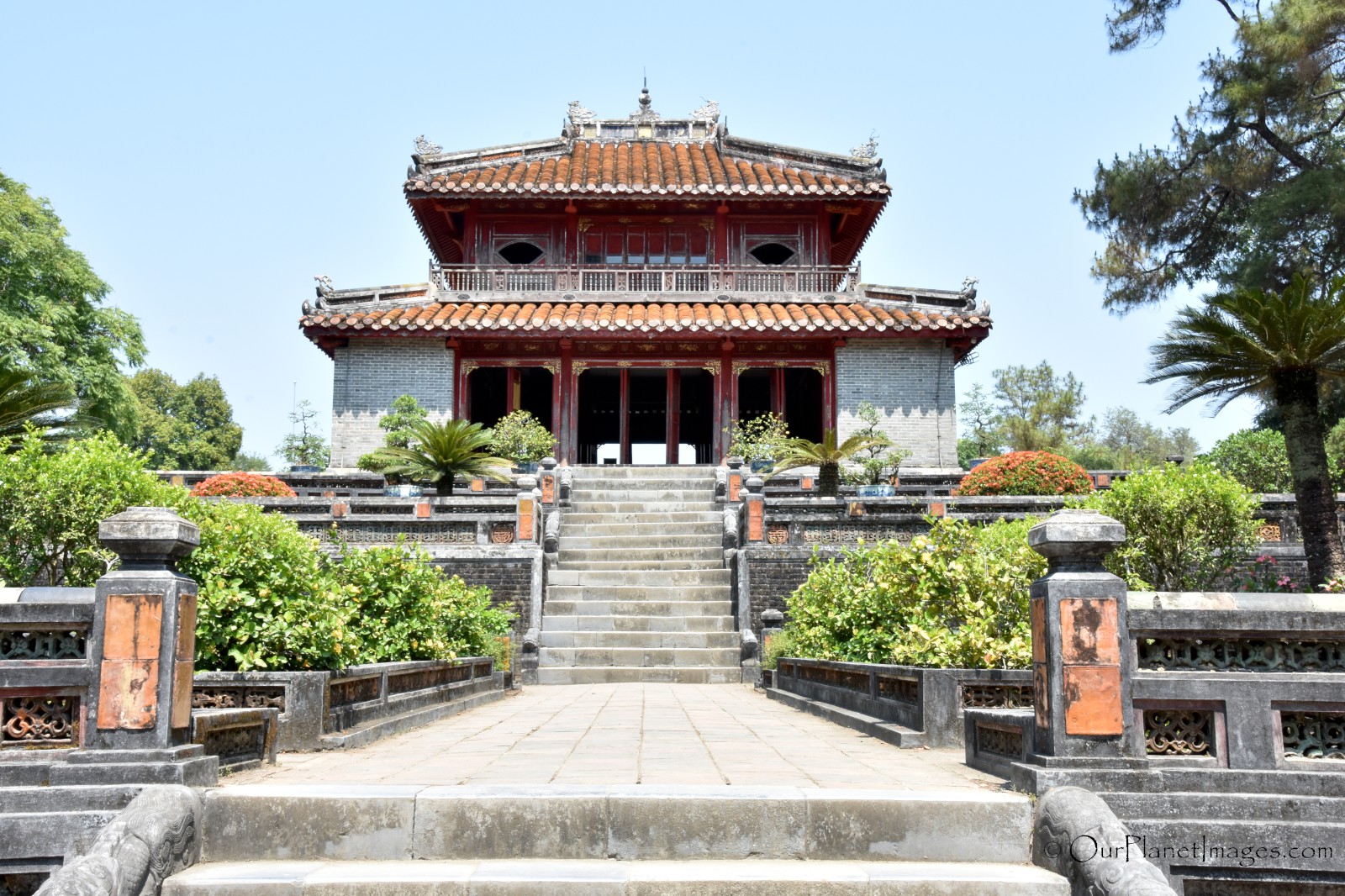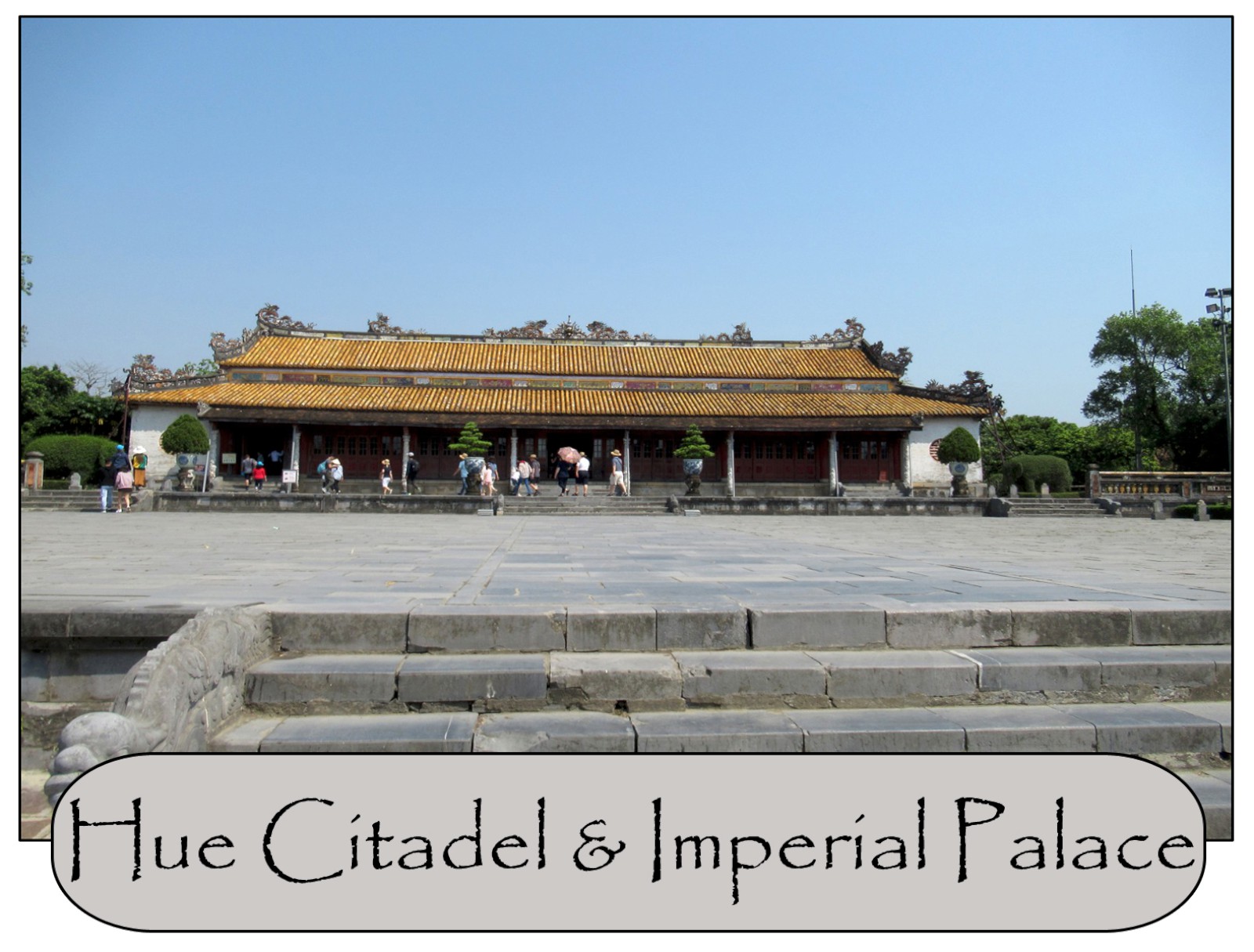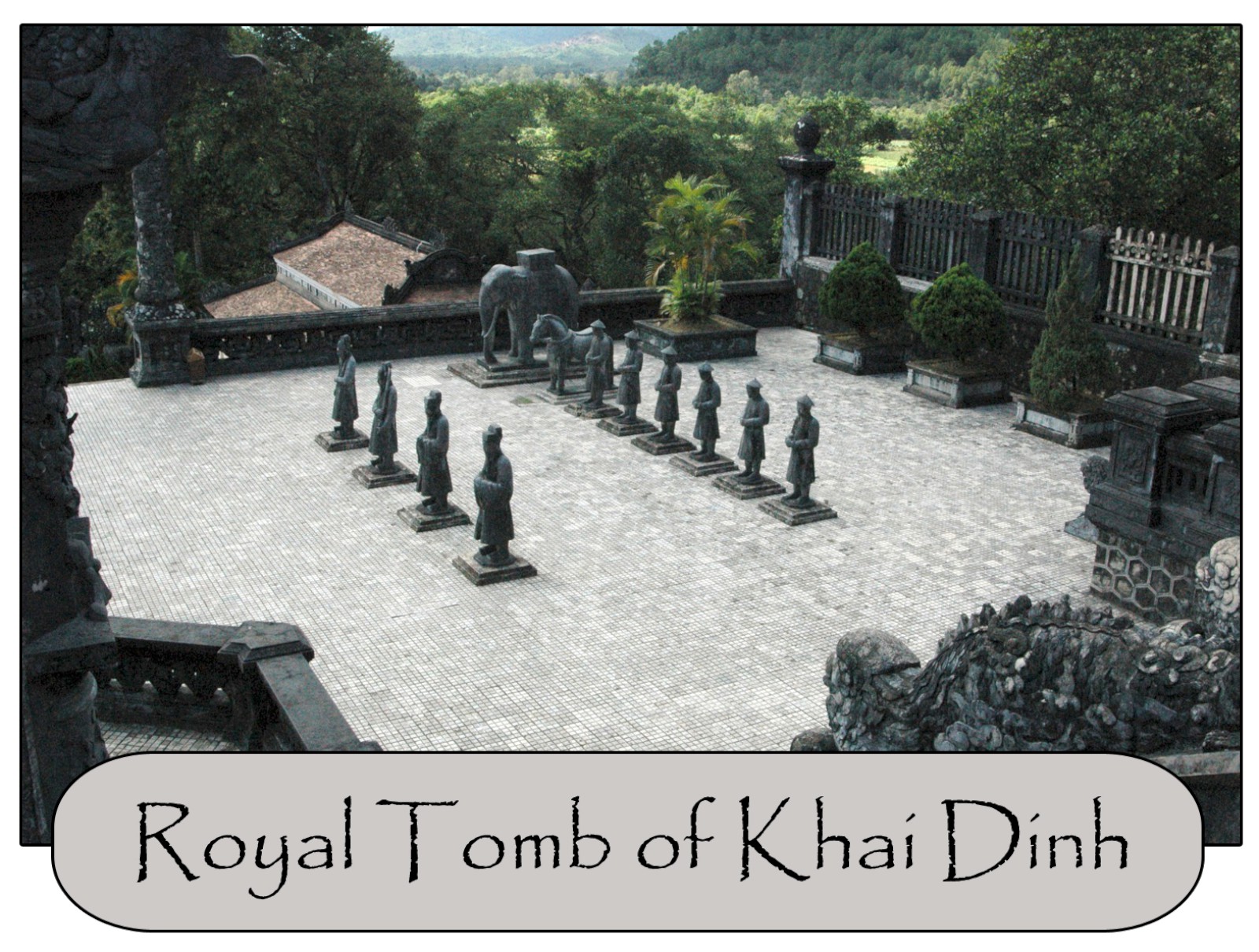Visiting Minh Mang Tomb feels more like being in a park than a Mausoleum.
Nguyen Phuc Dam (known as Minh Mang) became Emperor of Dia Nam (the former name of Vietnam) in 1820. Construction of his royal tomb began in 1840 but he passed away in 1841 and the tomb was not completed. Construction on his resting place continued until completion in 1843.
The complex is 44-acres in the shape of an oval with a high wall surrounding the entire complex. It is divided down the middle by a 2,300 feet long corridor that makes the complex of buildings nearly symmetrical. There are two lakes within the complex: Trung Minh Lake is the larger and borders the three sides of the Sung An Temple, Tan Nguyet Lake is a smaller crescent shape lake that separates Minh Lau Pavilion and the walled gravesite.
Main Entrance
The main entrance into the complex is through Dia Hong Gate which has three red doors. This gate was opened only once to admit the emperor’s coffin inside the tomb, after that is been closed forever. The current entrance into the complex is through a side door with a sidewalk to the front courtyard. The photos below are of the entrance gate from inside the complex.
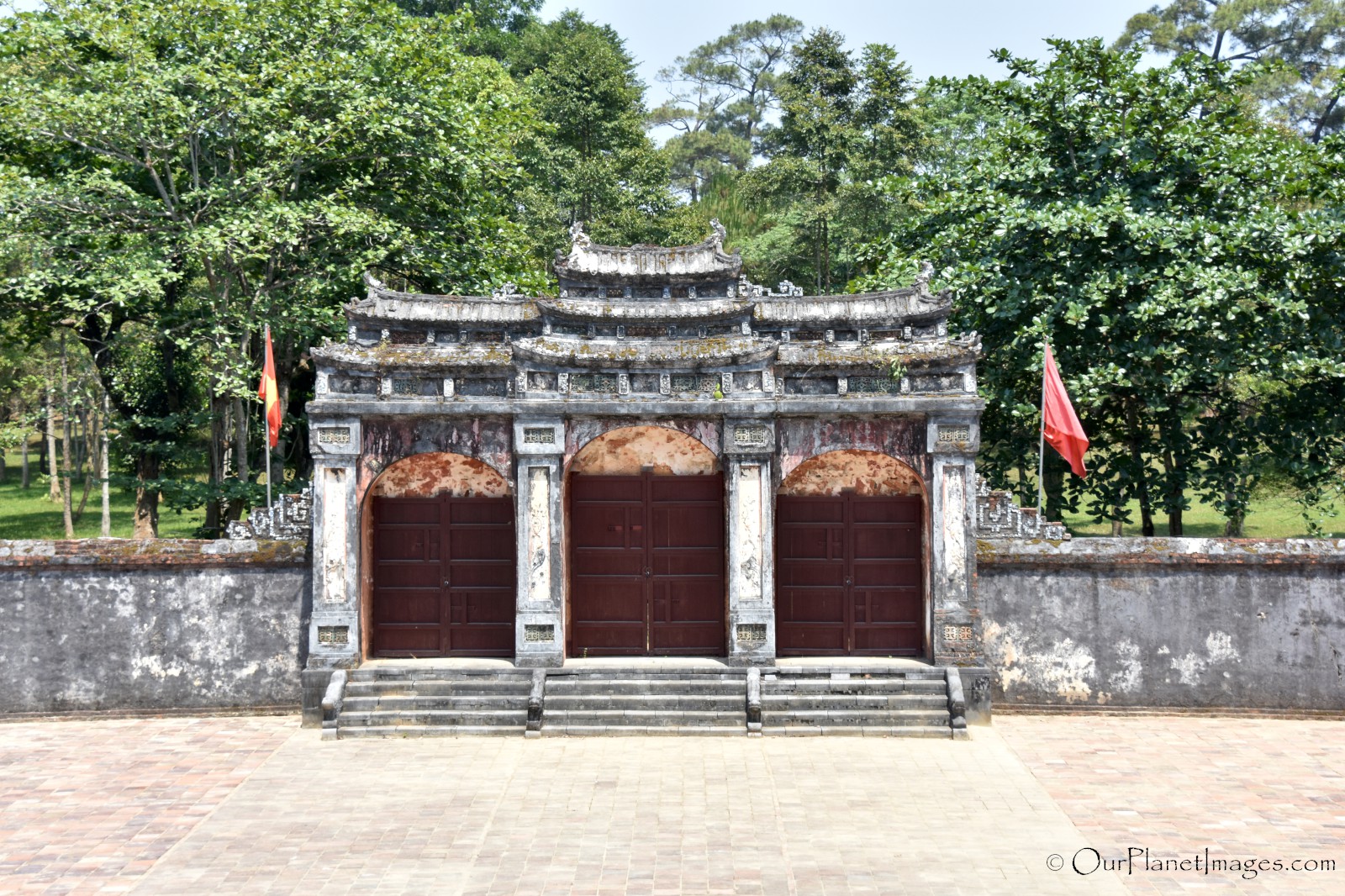

Front courtyard
On each side of the front courtyard (known as the Honor Courtyard) are statues of three officials, a horse and an elephant which is similar to other Royal Tombs in Hue.
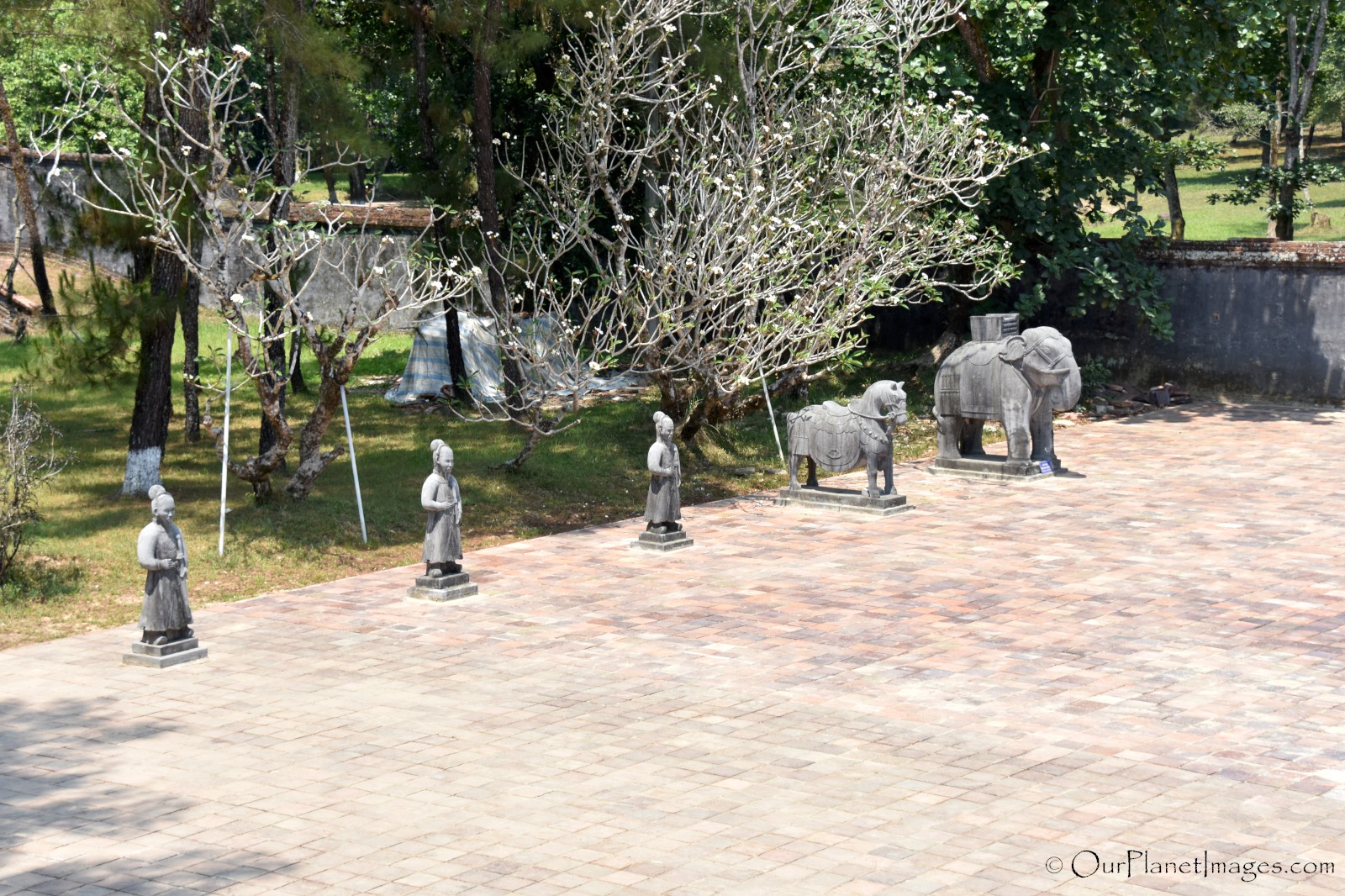

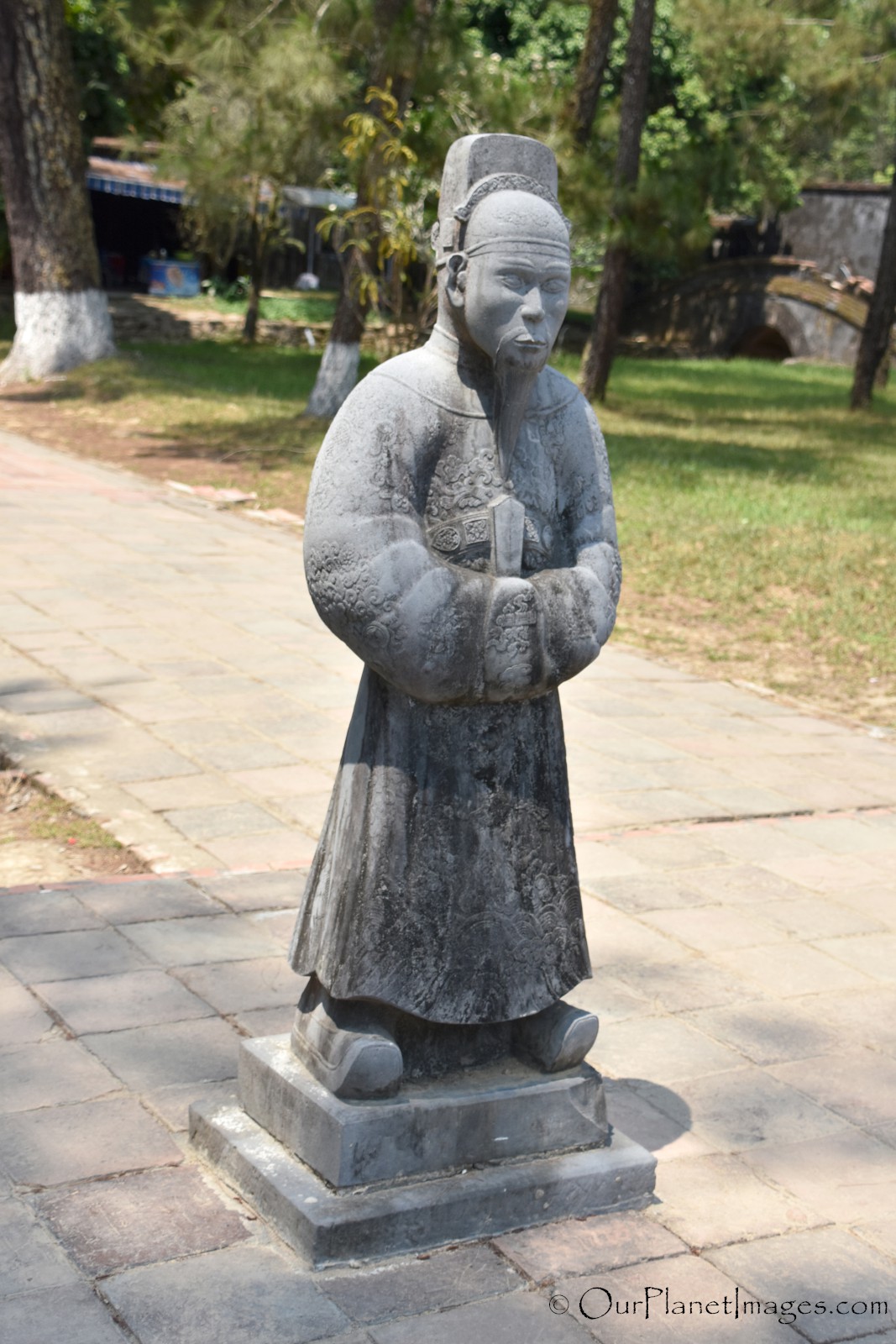

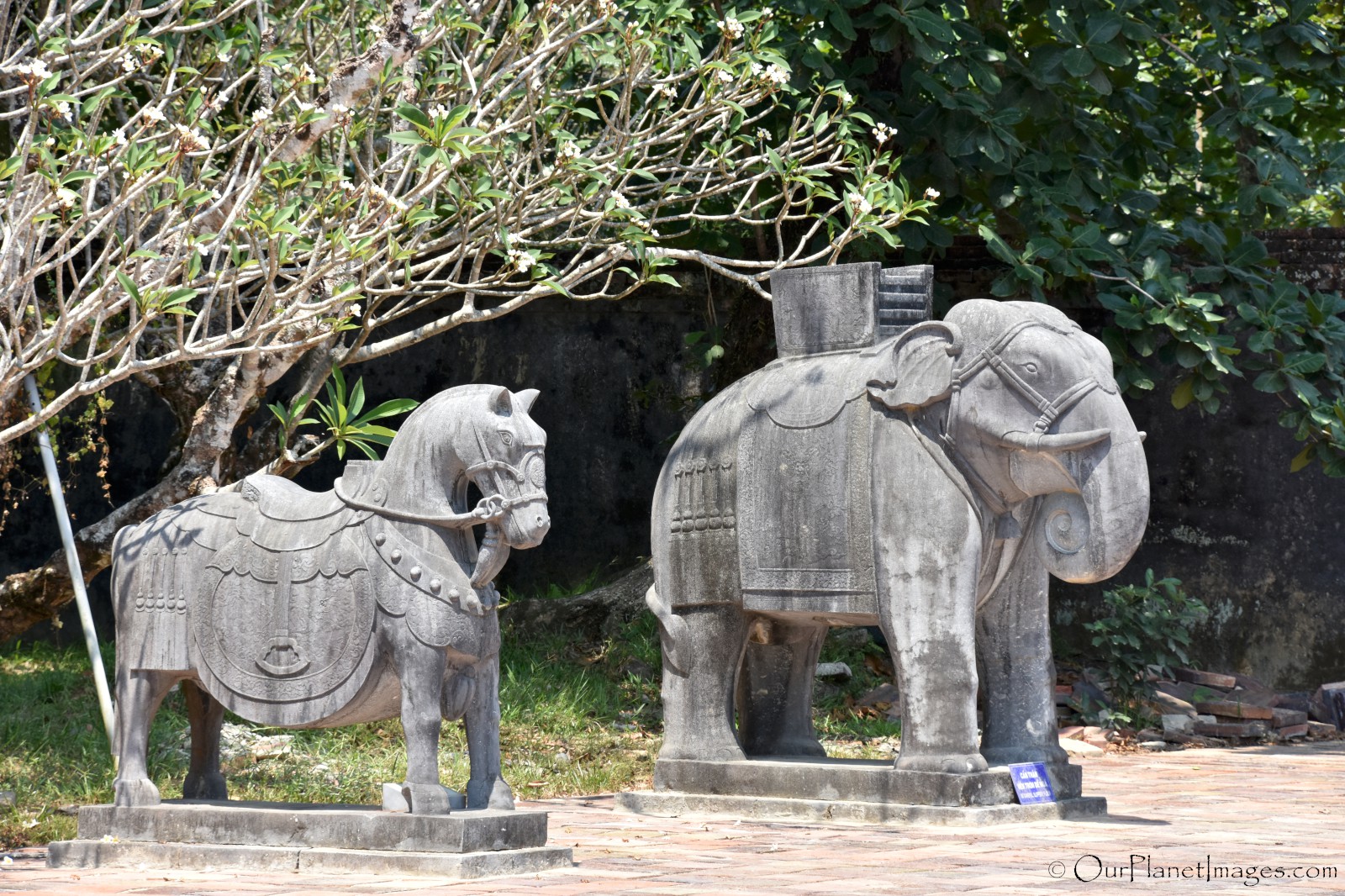
Stele Pavilion
At the back of the Honor Courtyard is the Stele Pavilion which contains a huge stone tablet inscribed with the accomplishments of Emperor Minh Mang. This stone tablet is the equivalent to our modern eulogy. The entrance to the pavilion is on a tall granite staircase with dragons on each. The roof of the pavilion is colorfully decorated with pictures, poetry and more dragons. In the center of the roof is a wine flask that represents leisure and refinement.

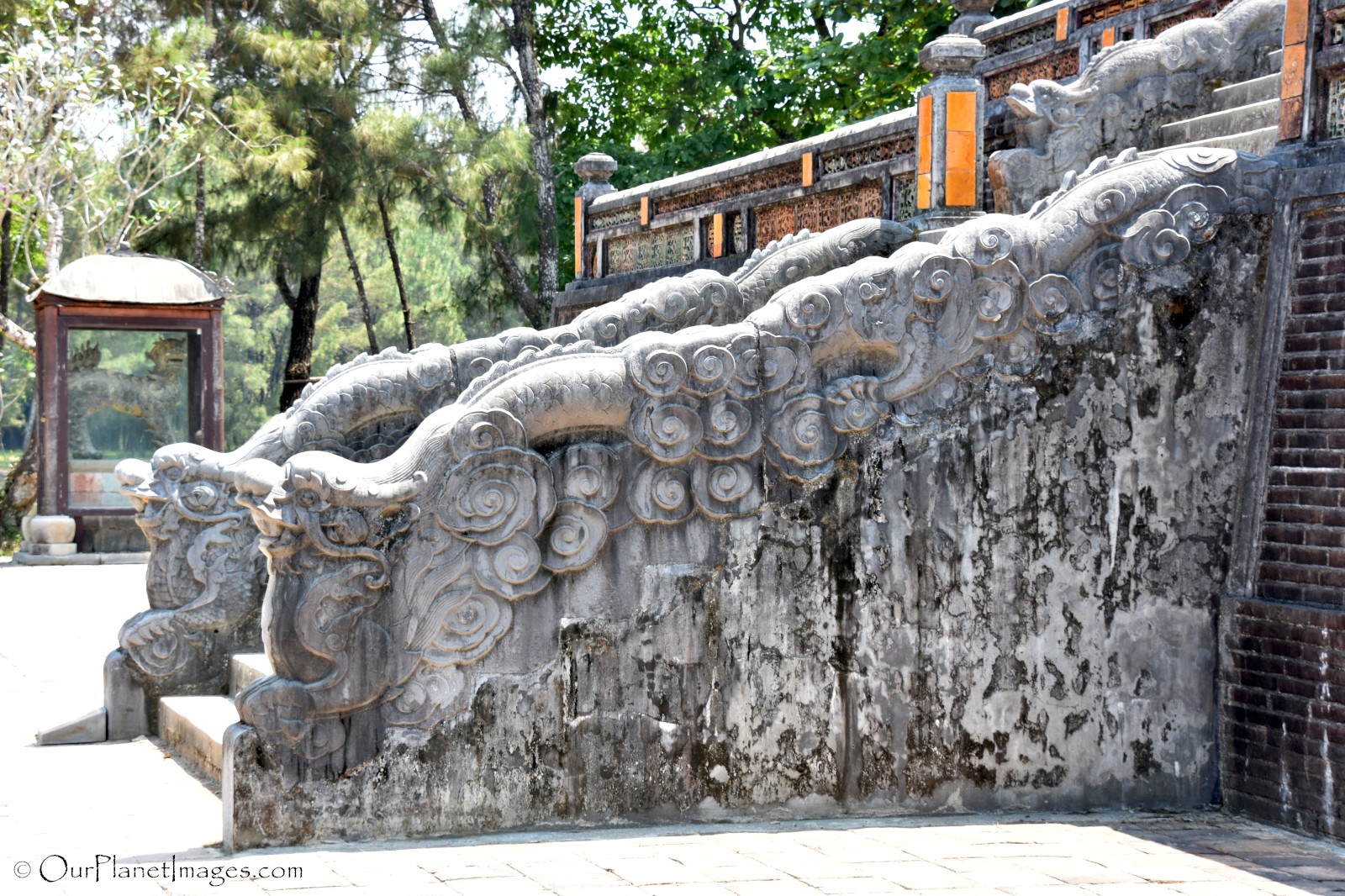
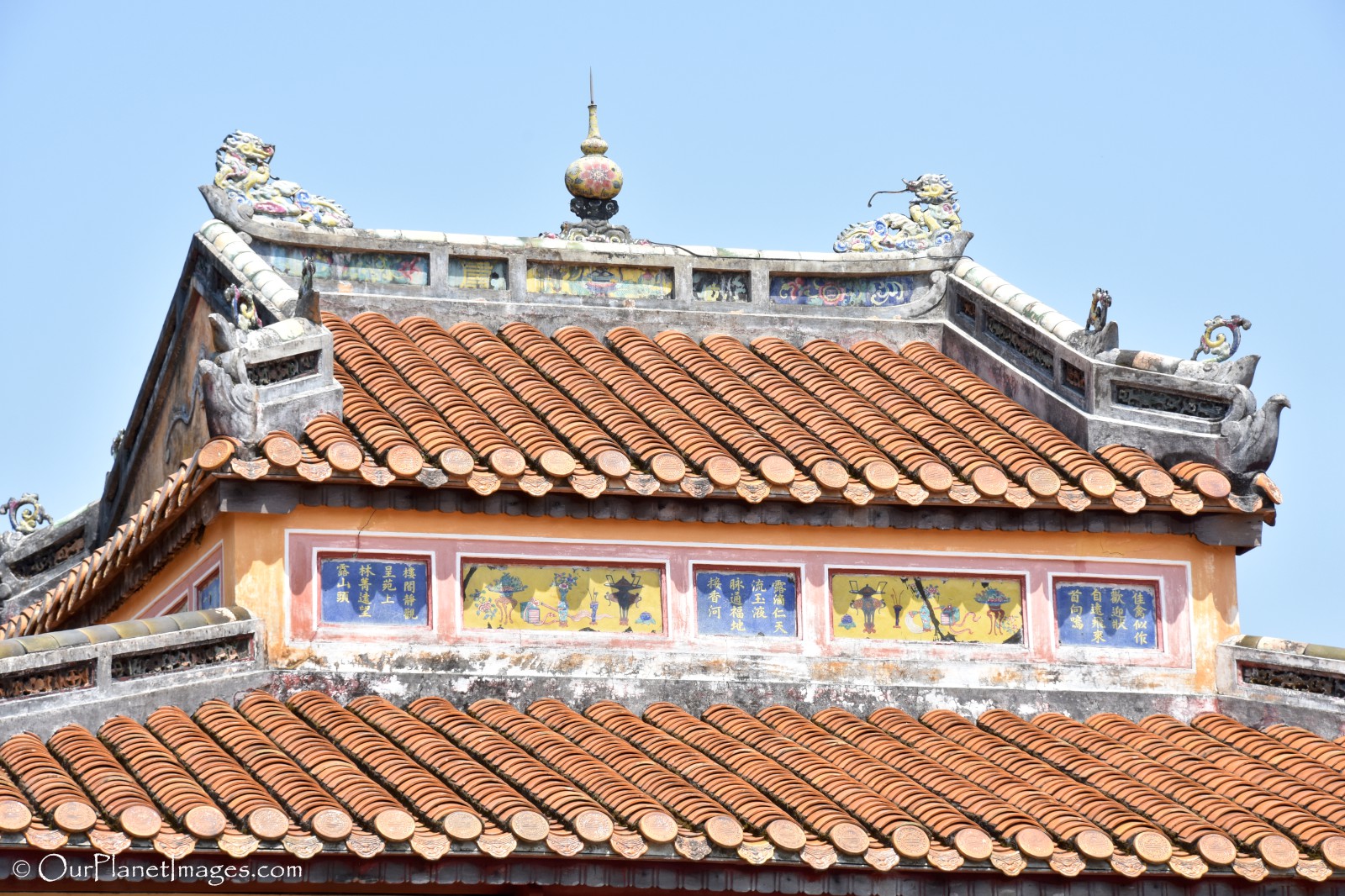
Hien Duc Gate
The Hien Duc Gate is the entrance into the walled area that preserves the courtyard of salutation and the Sung An Temple. On top of the roof is a red translucent solar disk that diffuses light down onto the compound.
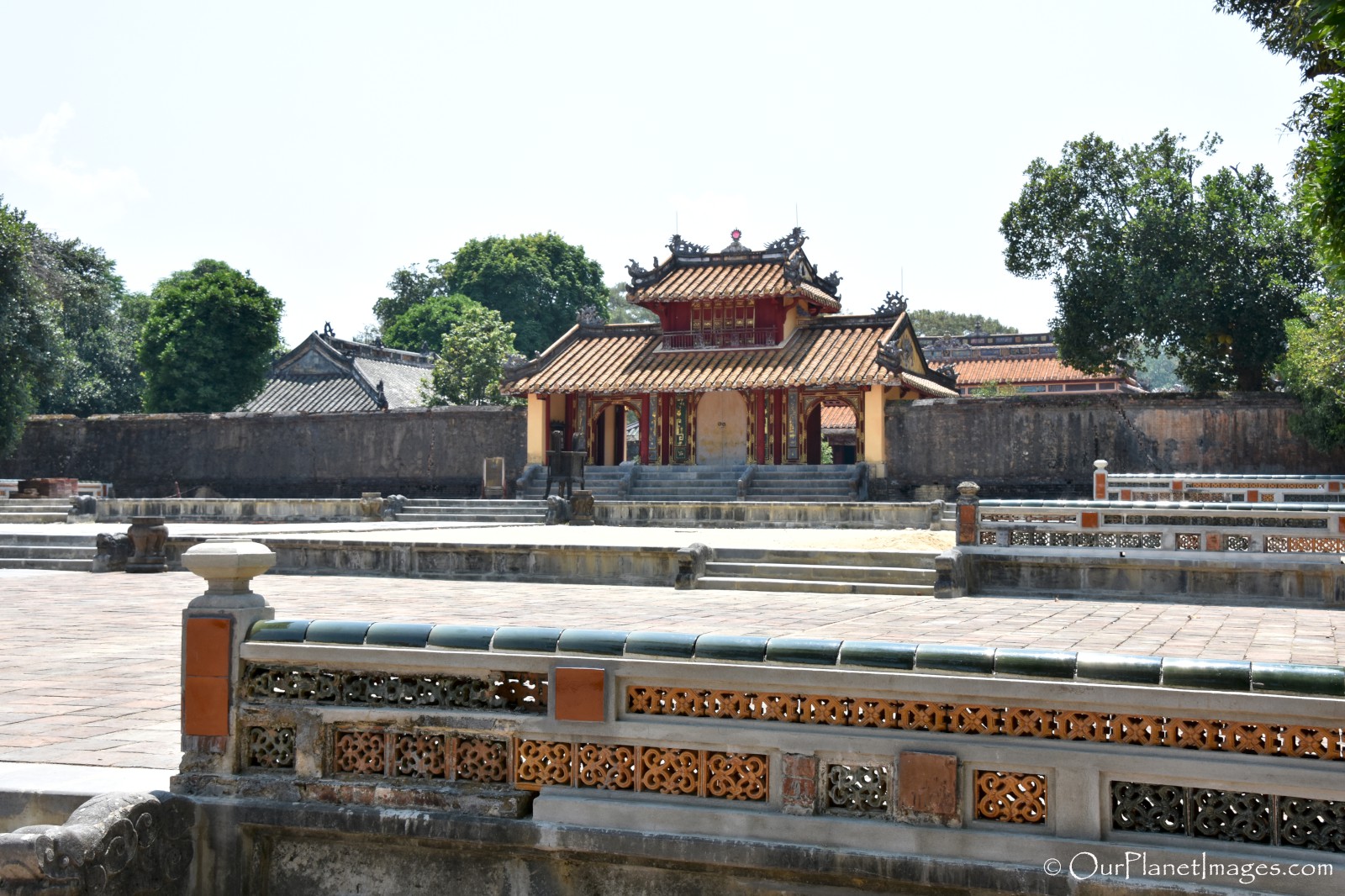
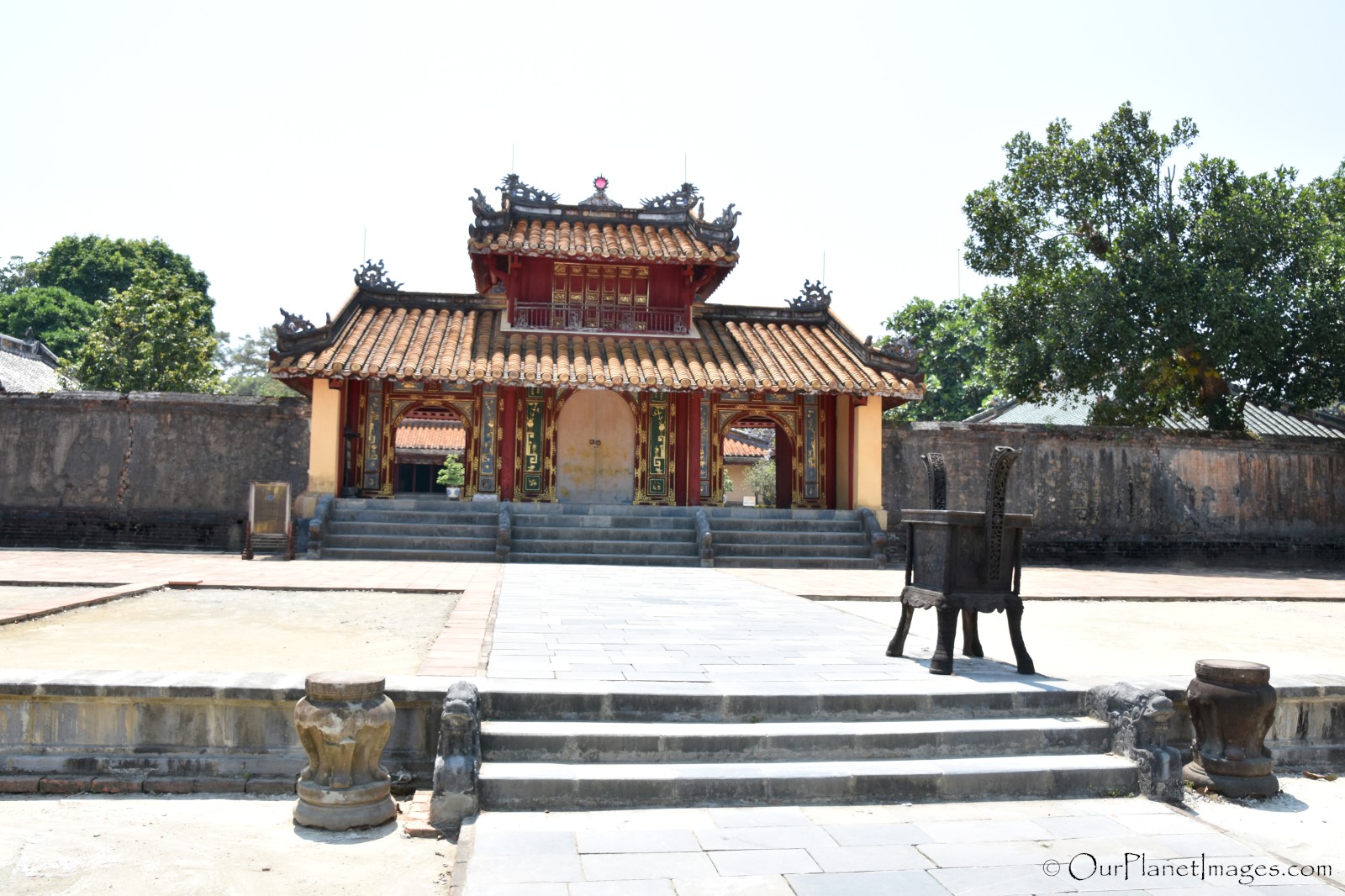
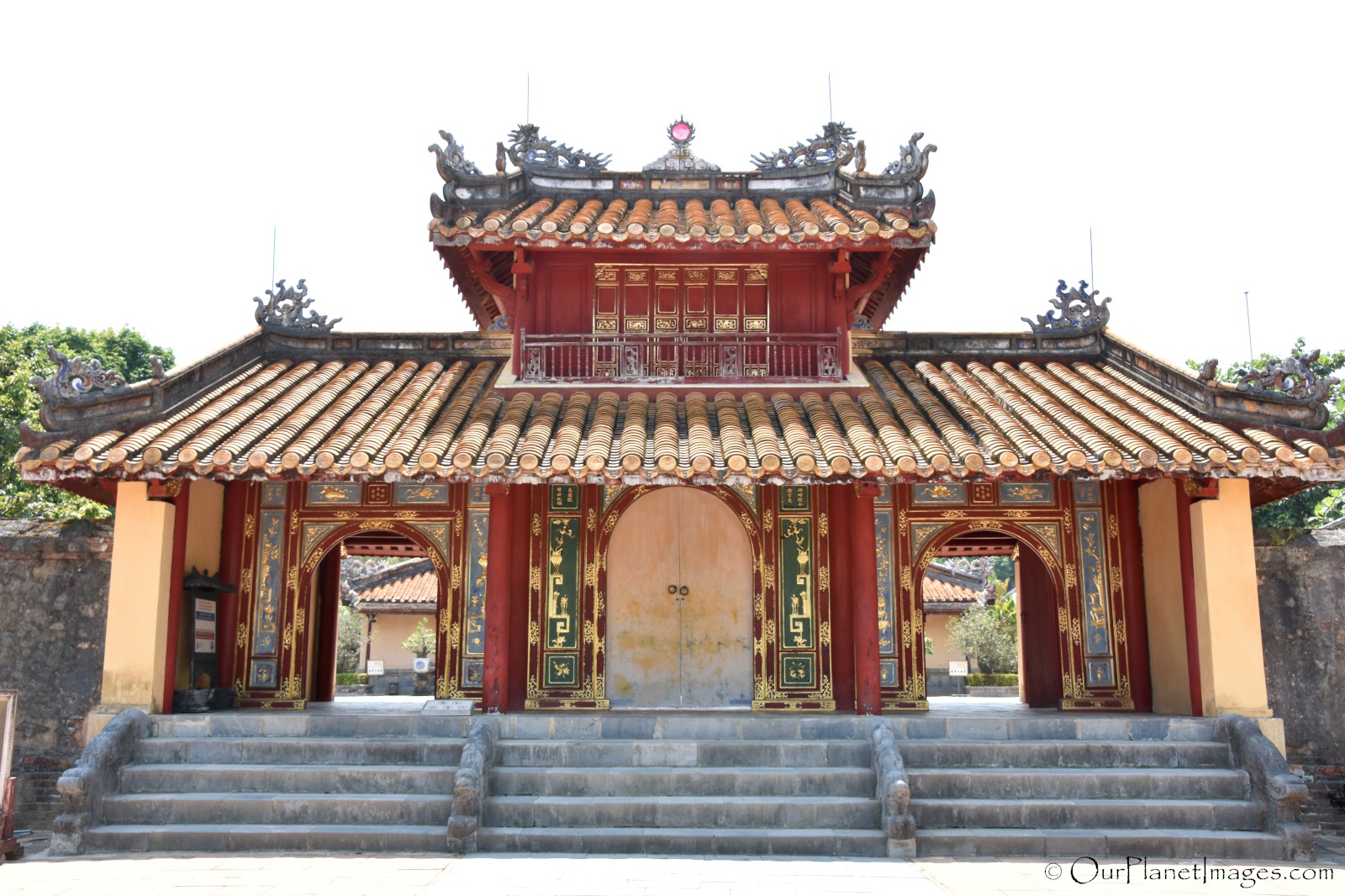
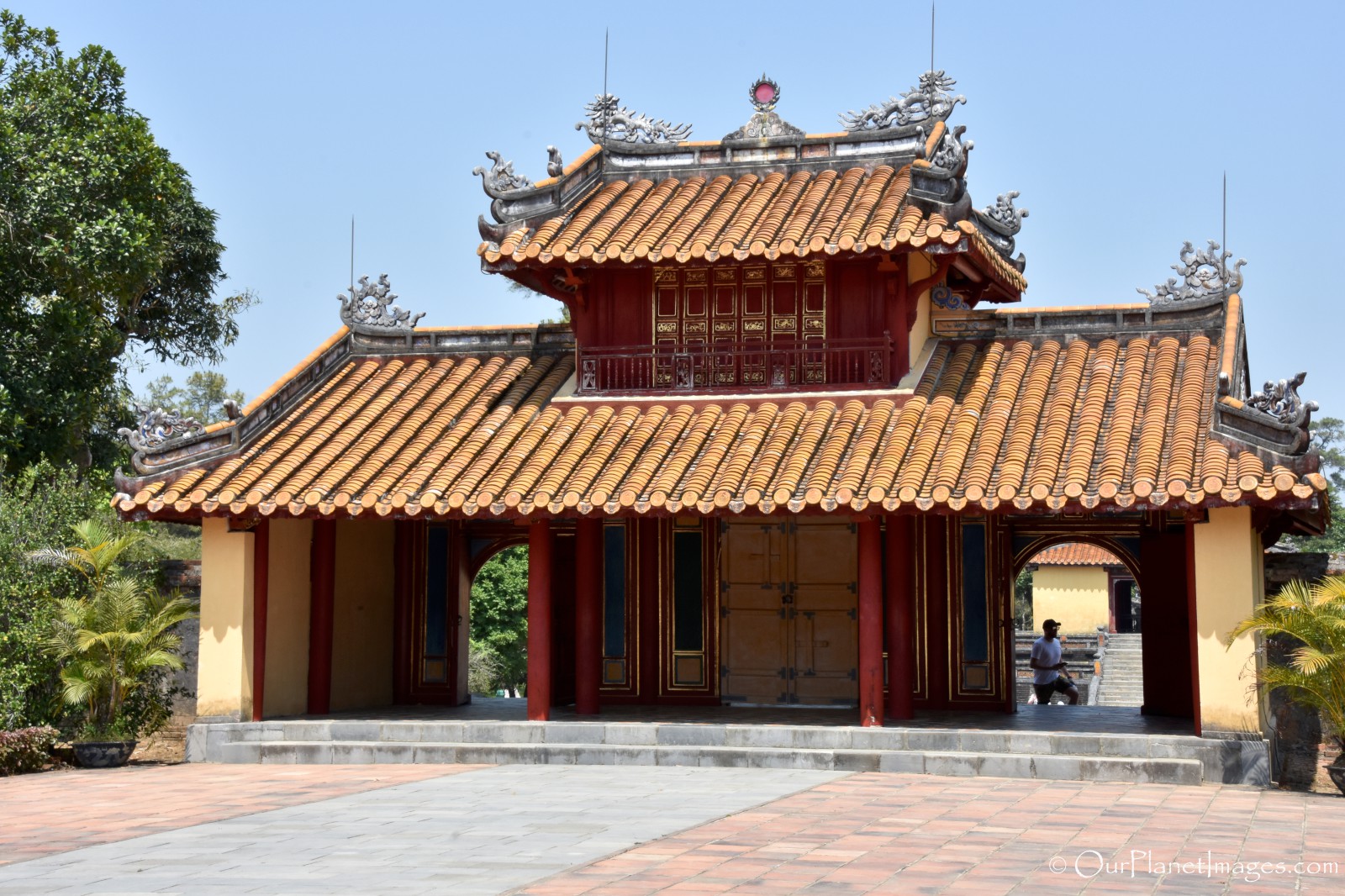
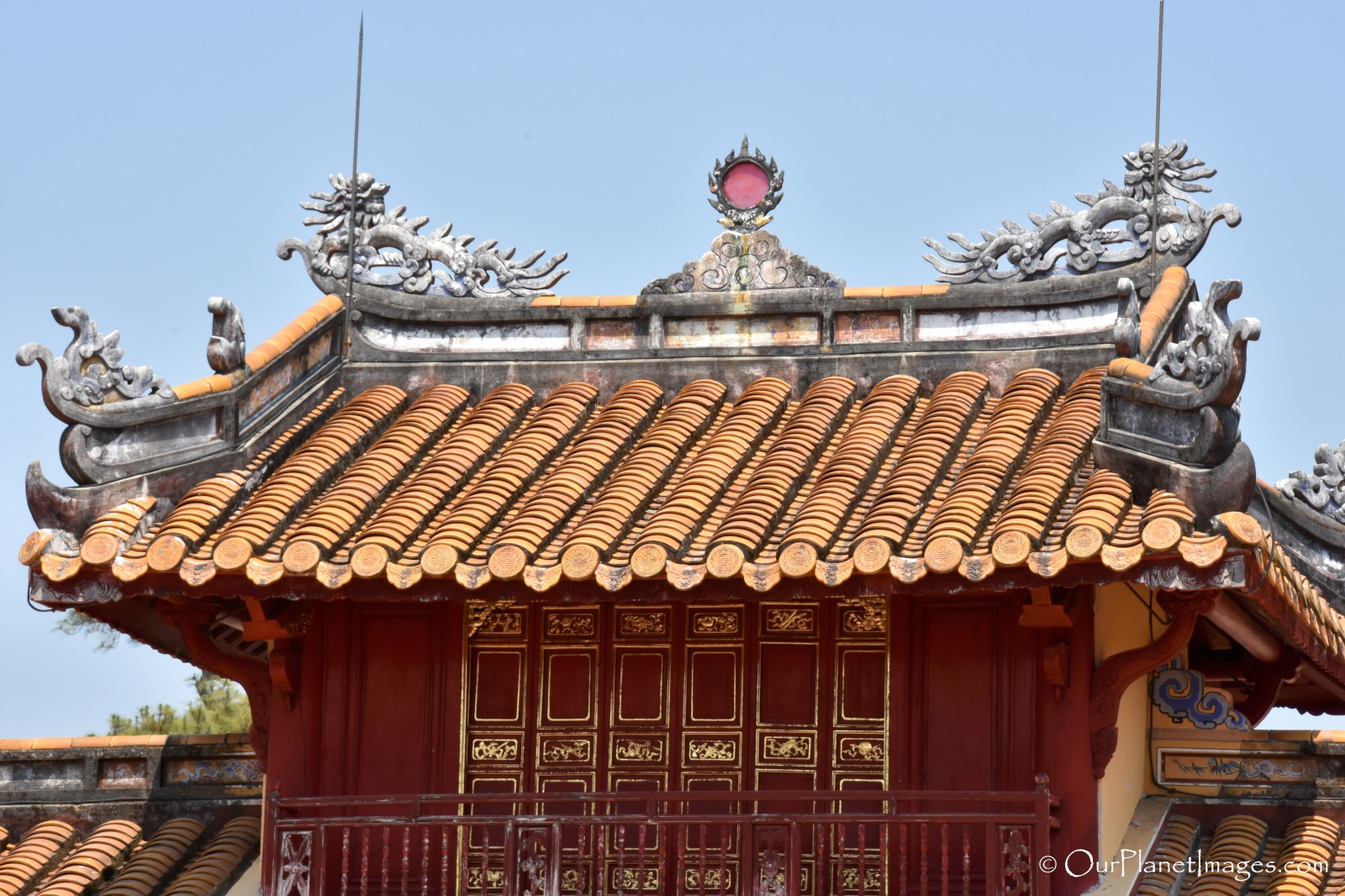
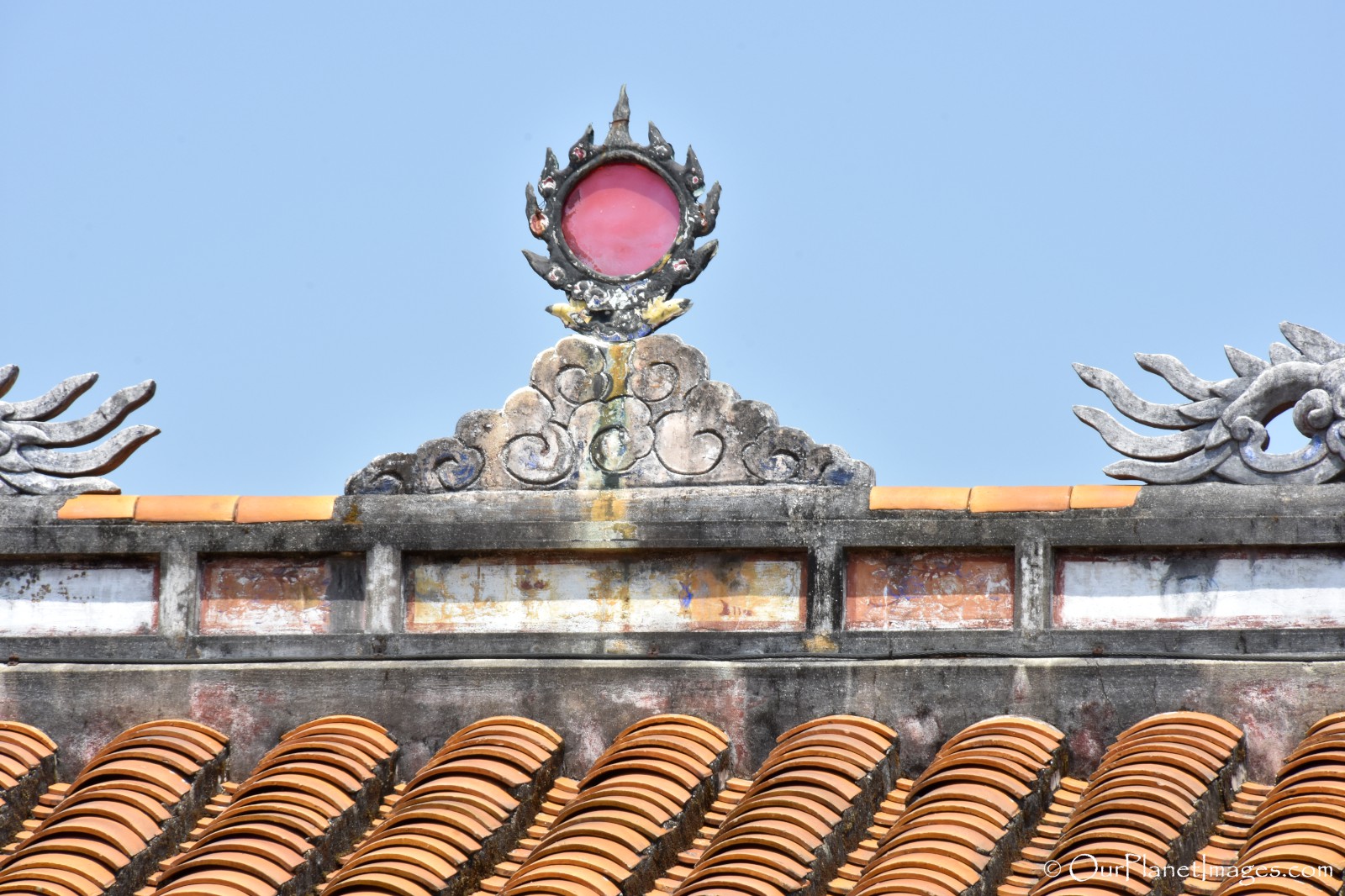
The entry doors are elegantly decorated which are shown in the first two photos below and the third photo shows the interior of the gate after passing through the doors.
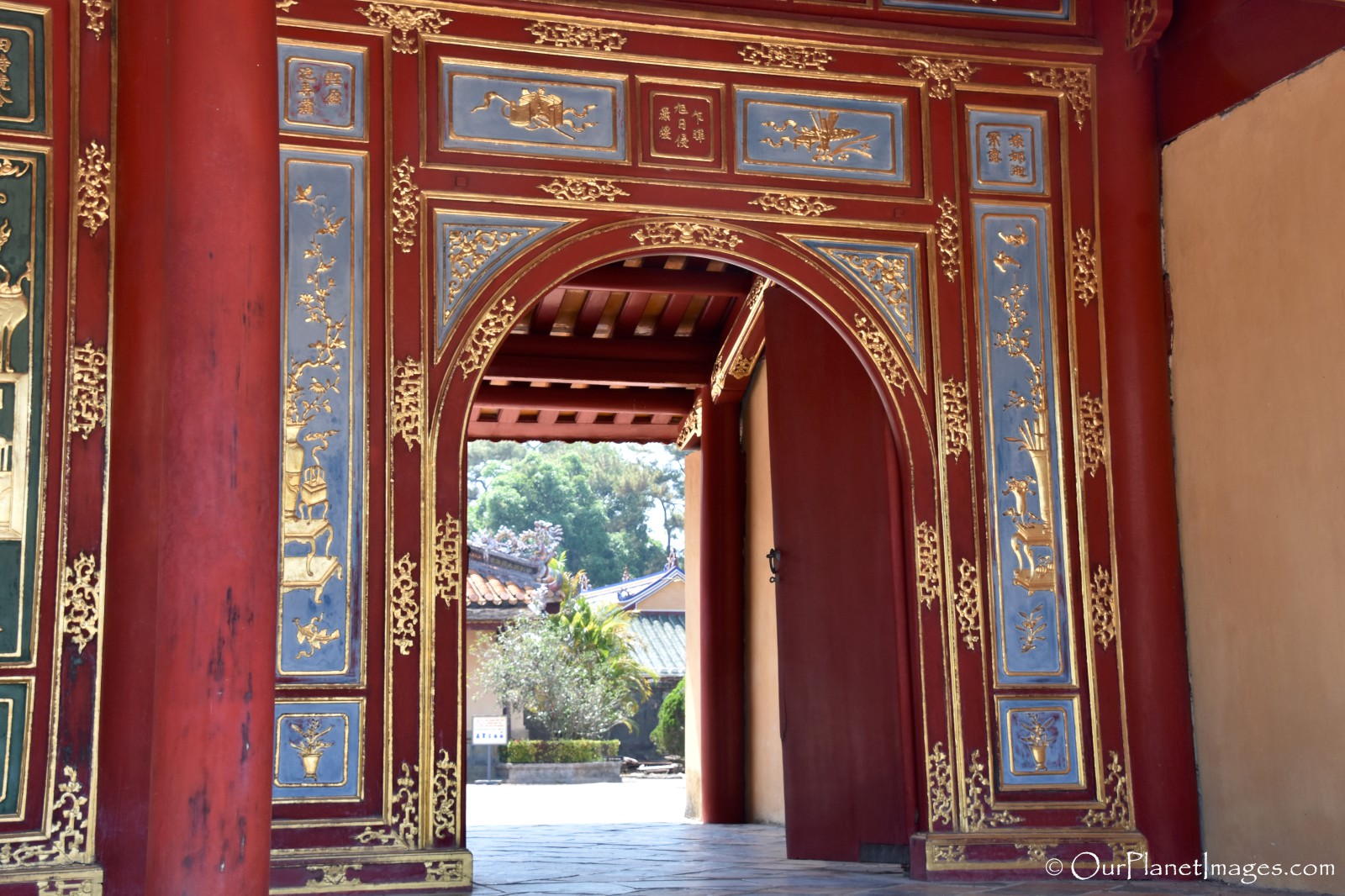
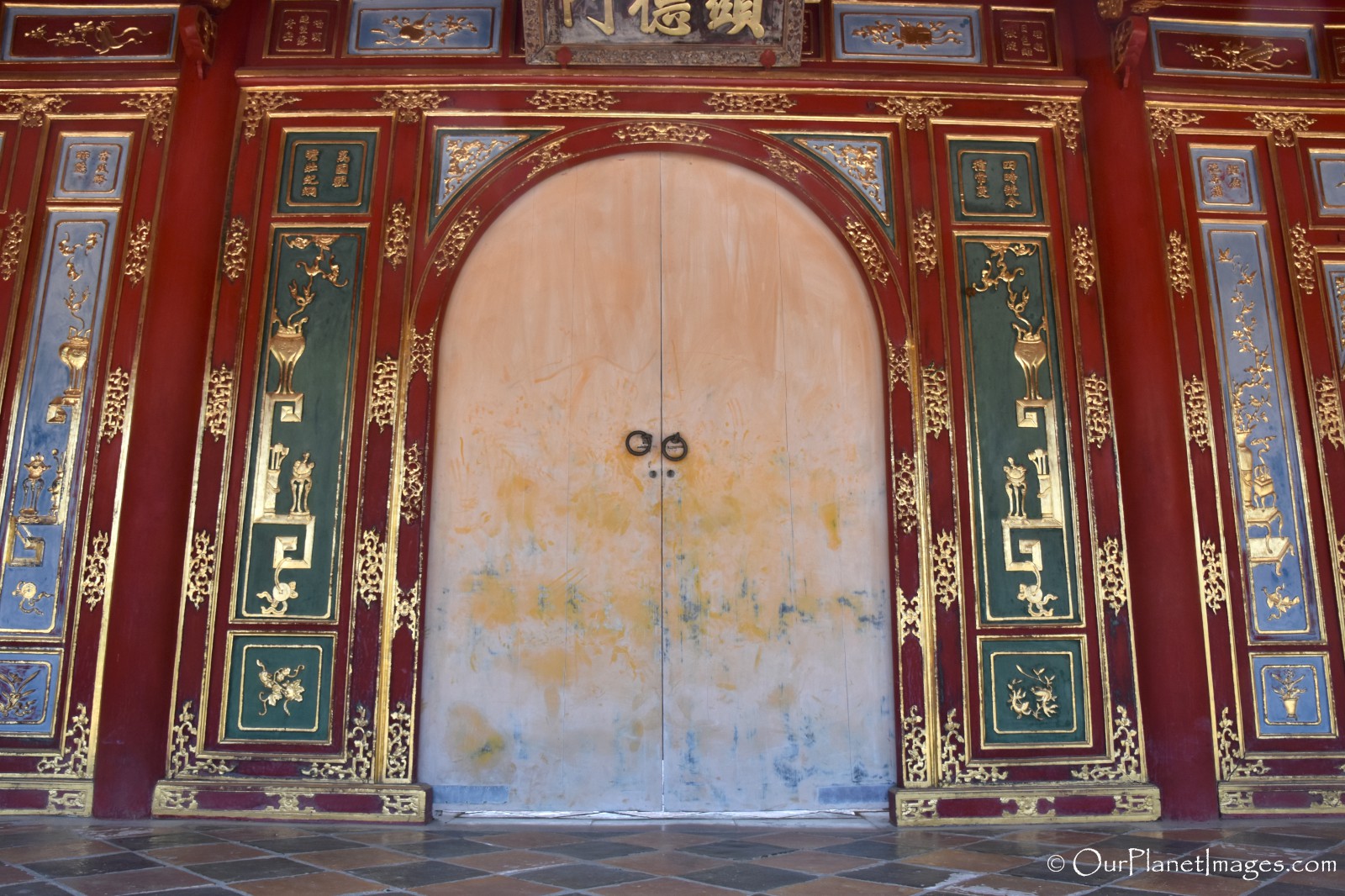
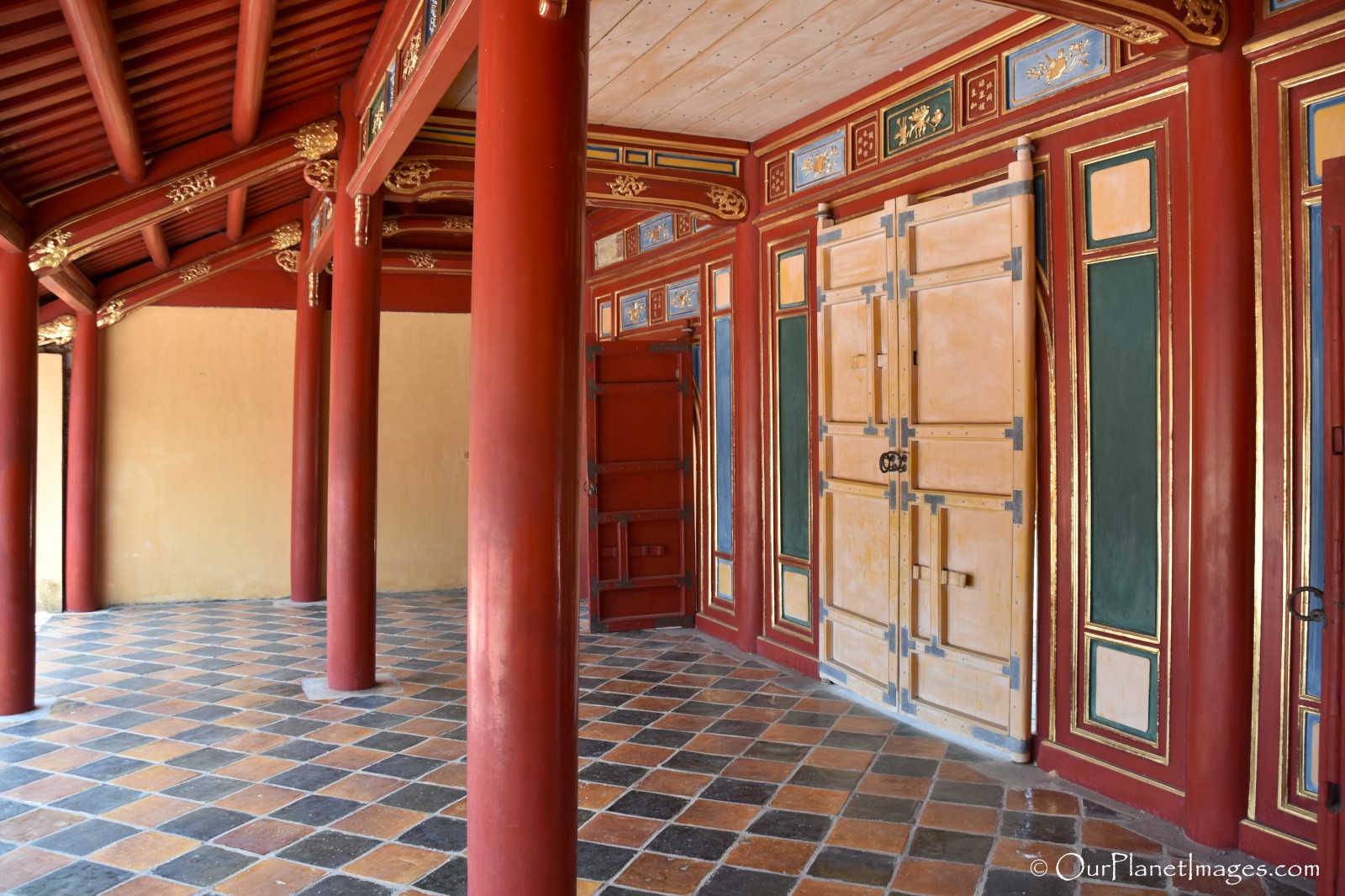
Sung An Temple and Courtyard of Salutation
On each side of the Courtyard of Salutation is a green roofed pavilion and at the back of the courtyard is the larger Sung An Temple.
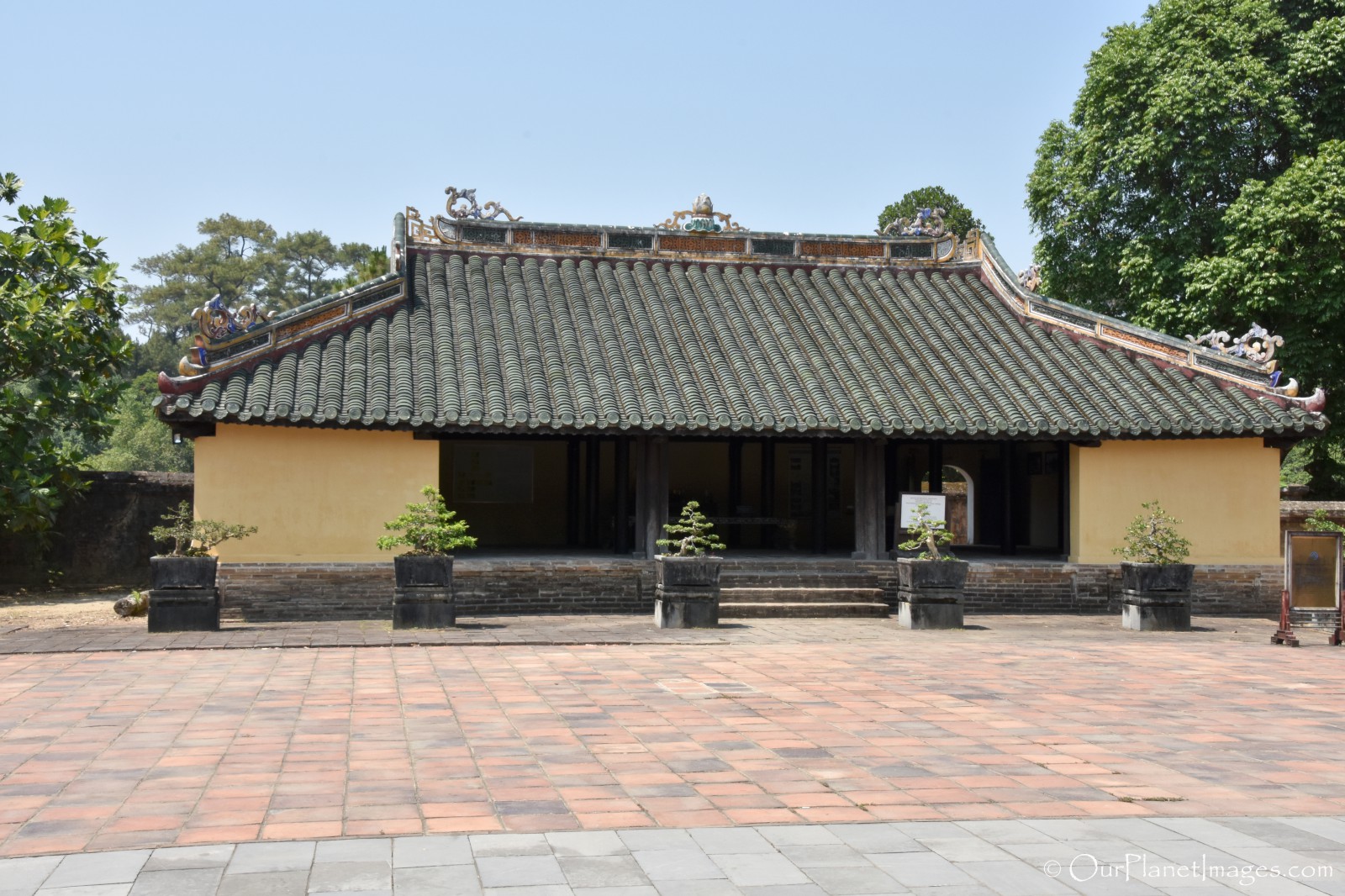
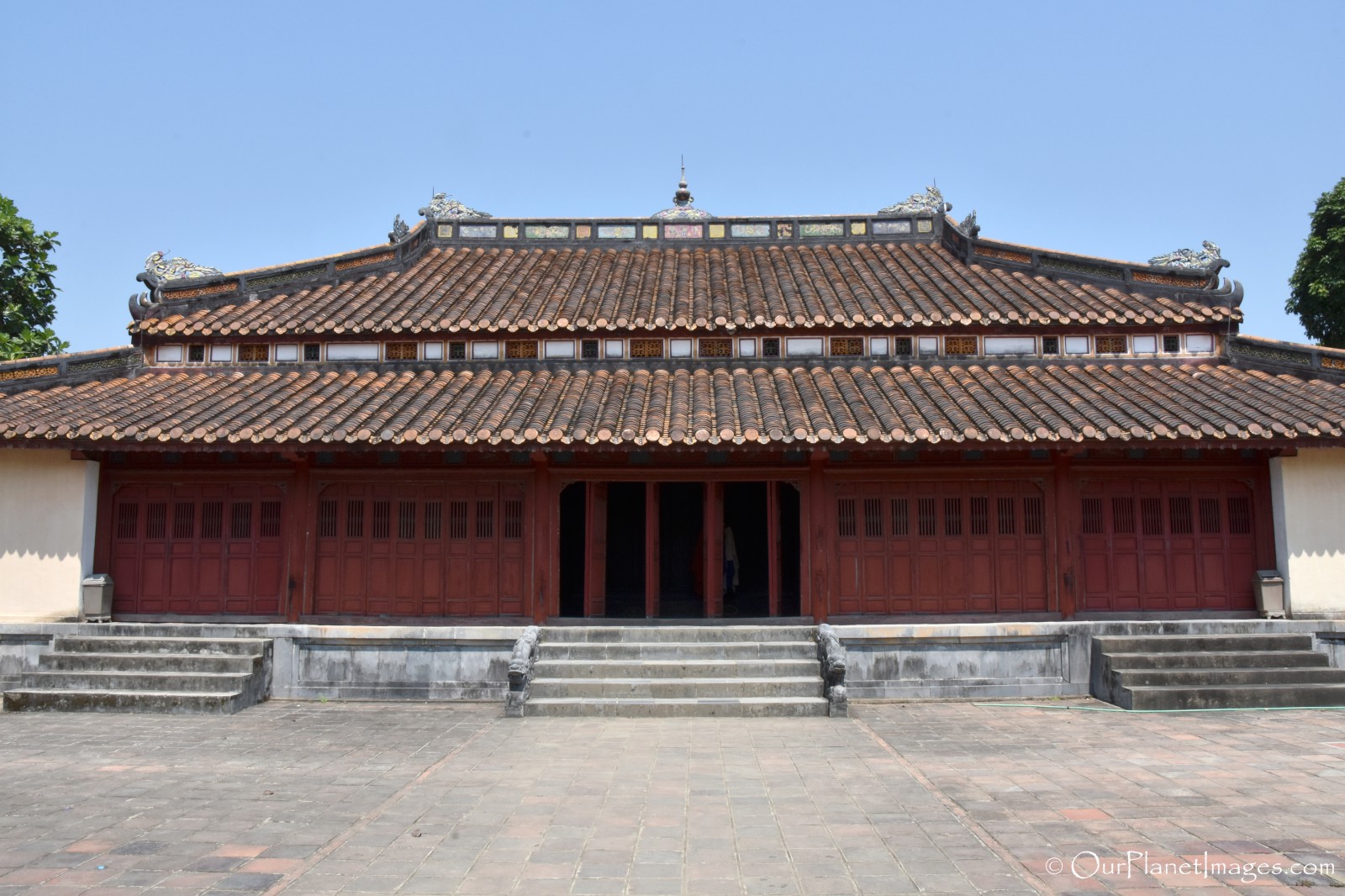
The inside of Sung An Temple is beautifully decorated with brightly colored walls and an ornate ceiling.
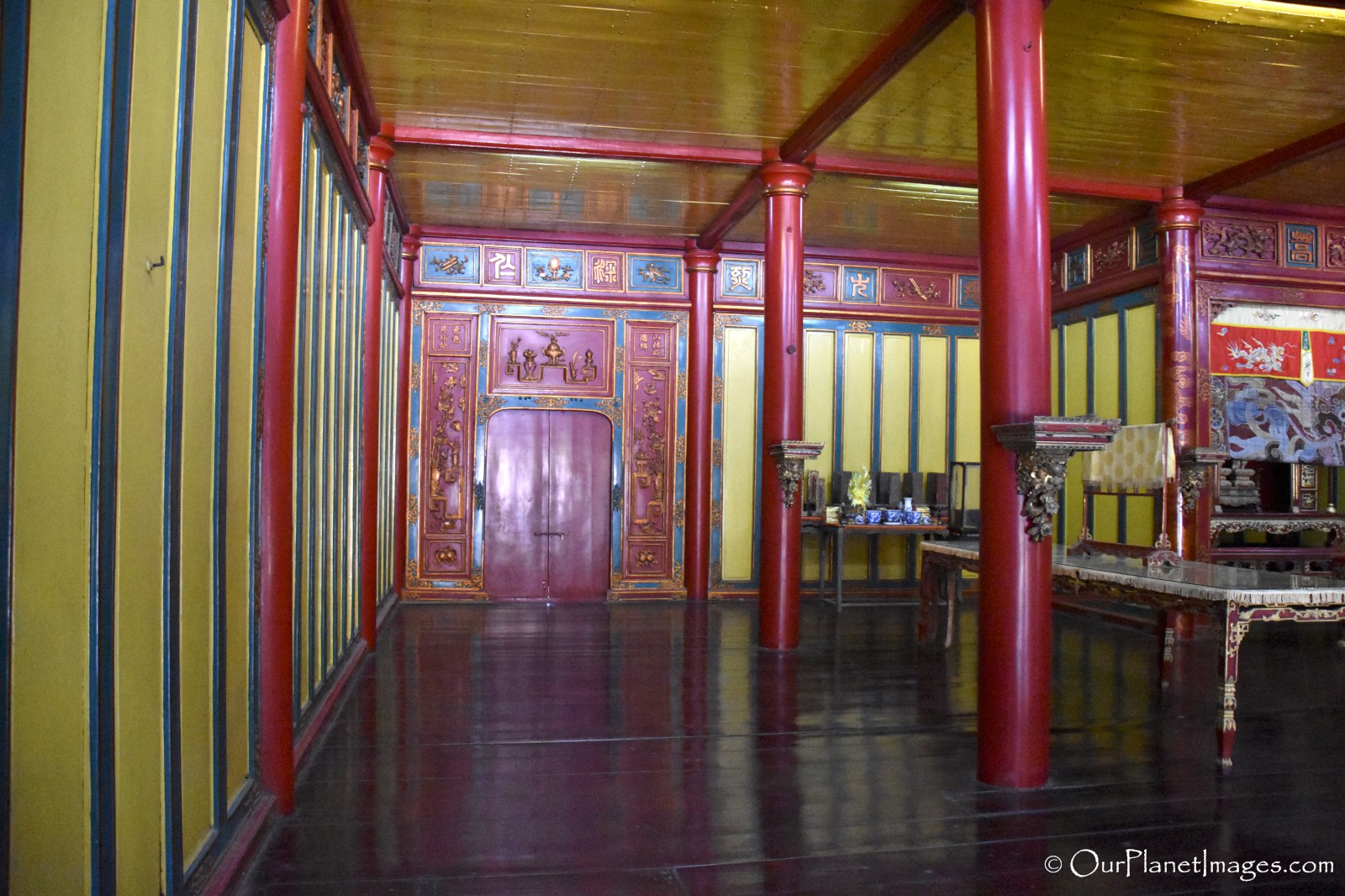
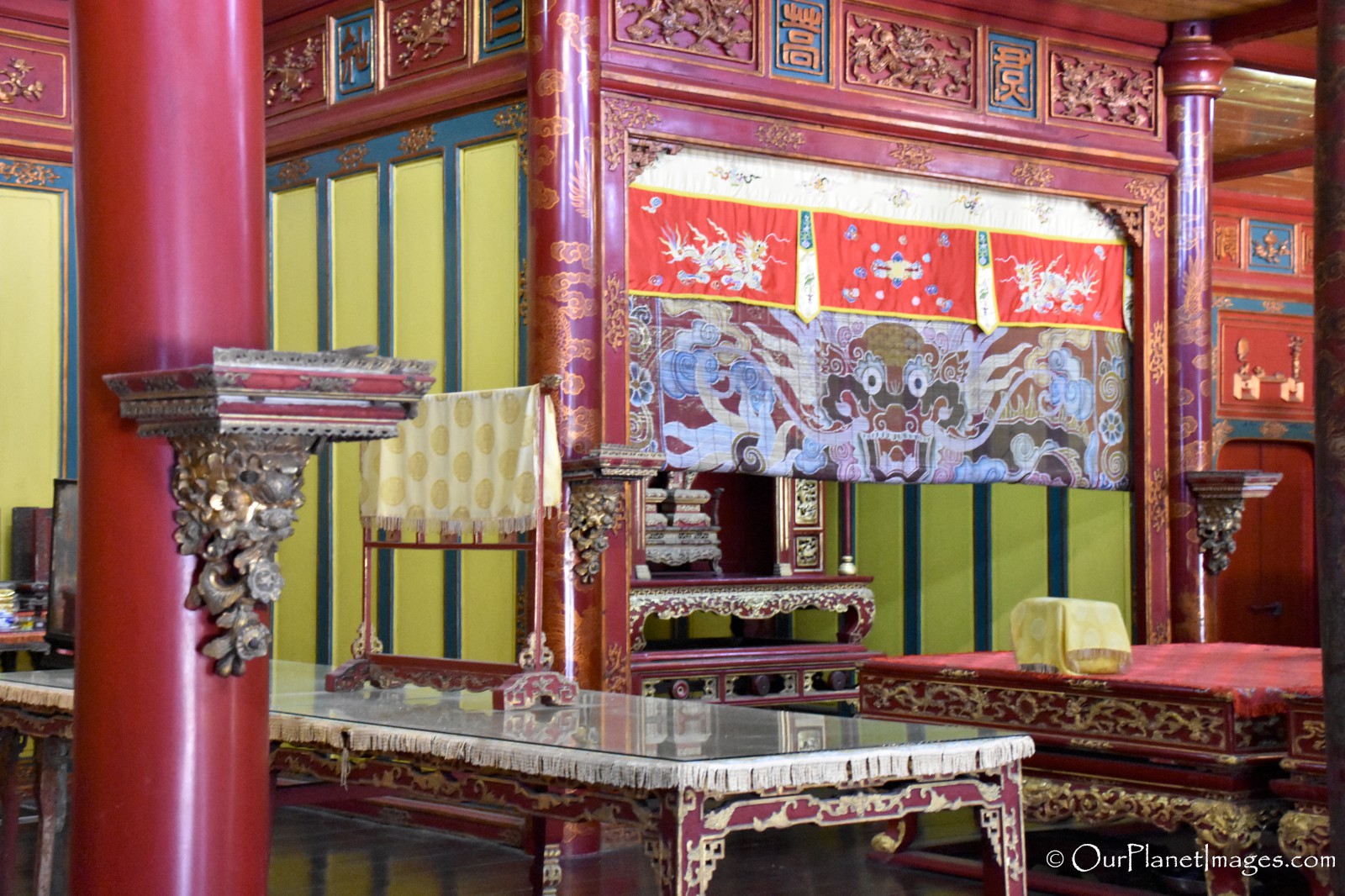
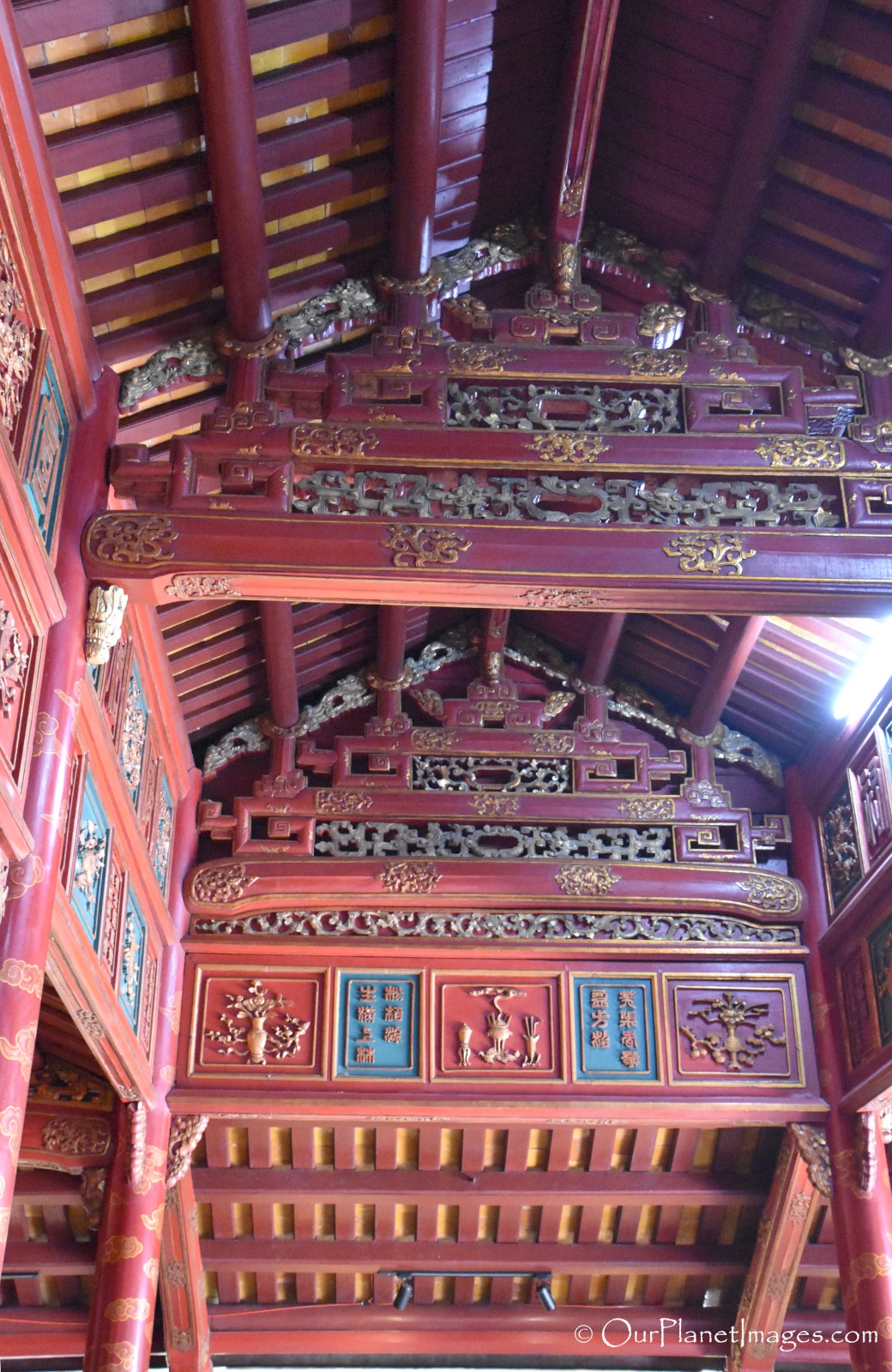
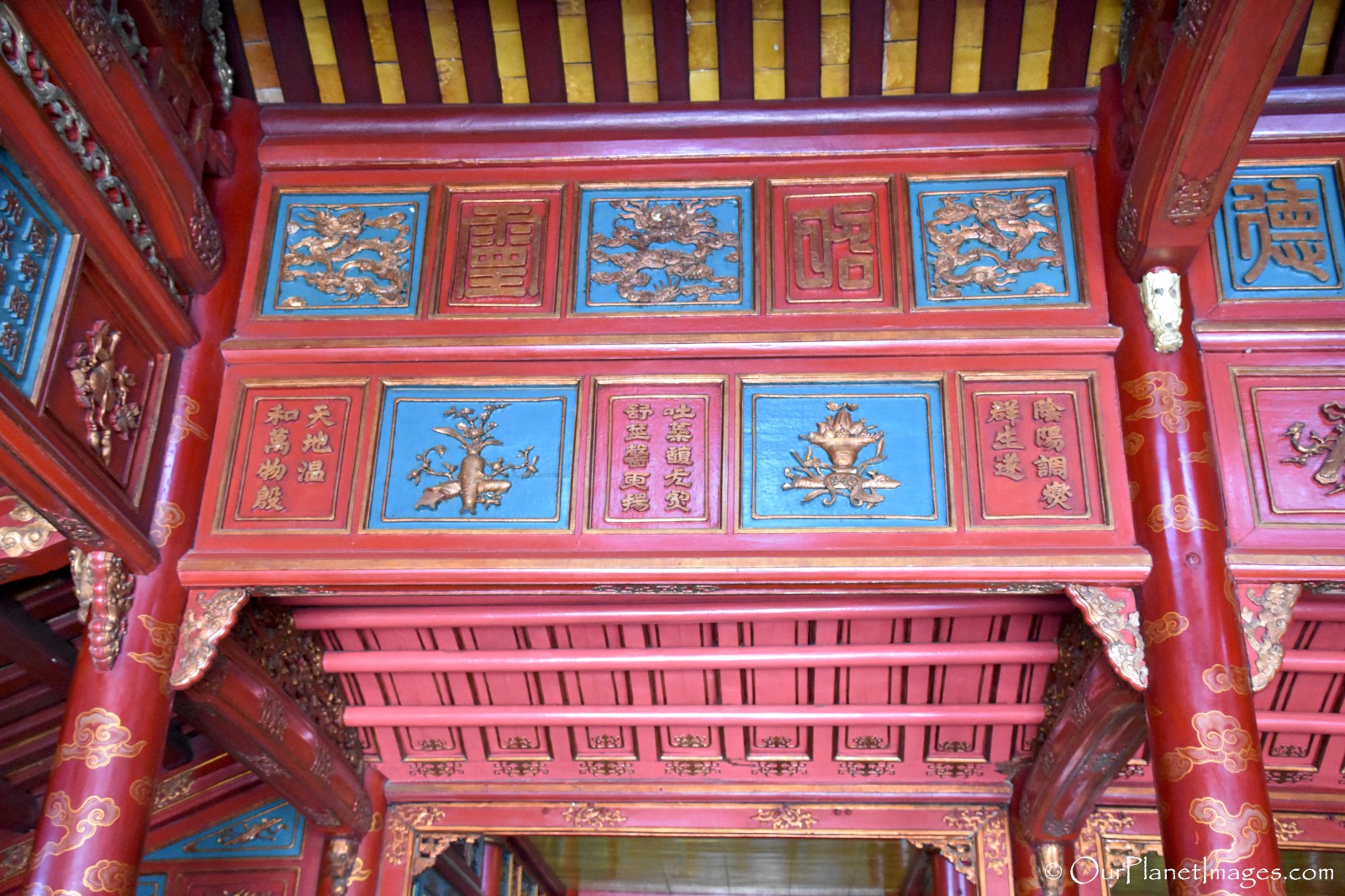
Bridges to Minh Lau Pavilion
On the back side of the Sung An Temple are three identical parallel bridges that cross the Trung Minh Lake and allow access to the Minh Lua Pavilion.
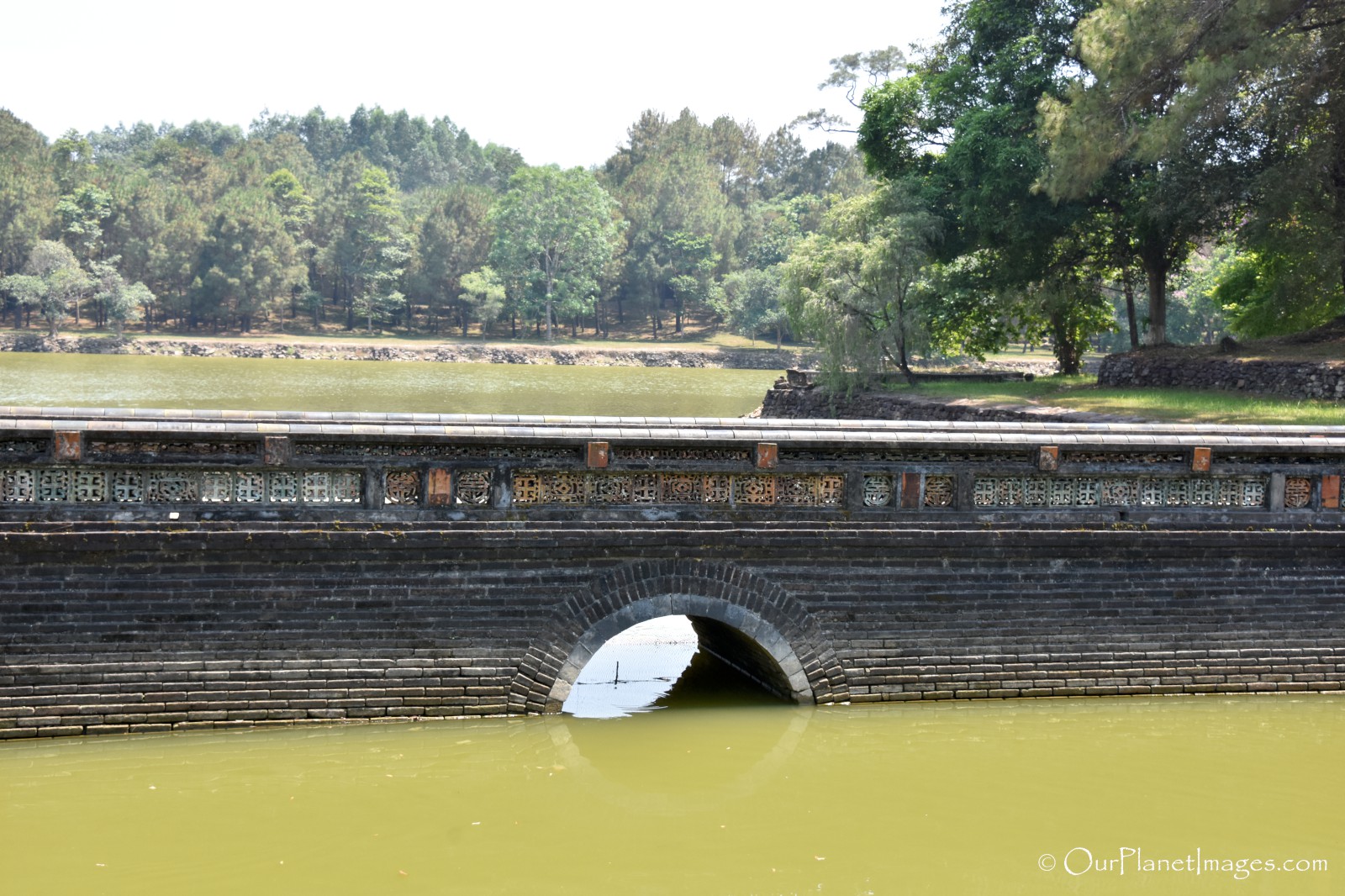
Minh Lau Pavilion
The Minh Lau Pavilion is the largest building in the compound and stands on the top of three terraces that symbolize the three powers in the universe: heaven, ground and humans. The Minh Lua Pavilion was known as the pavilion of light and was used as a moon viewing platform. The two photos below are of the front and back of the pavilion.
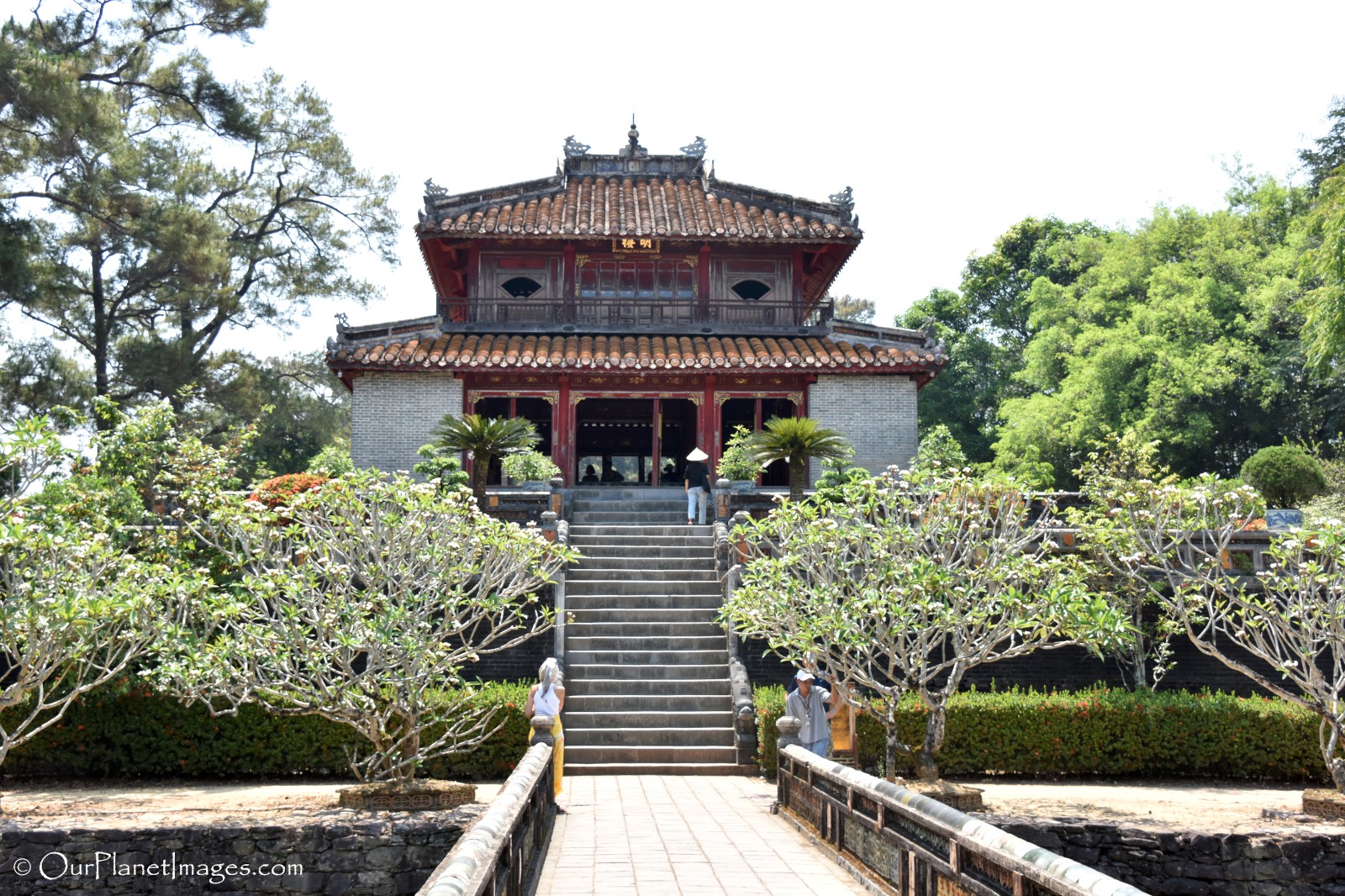
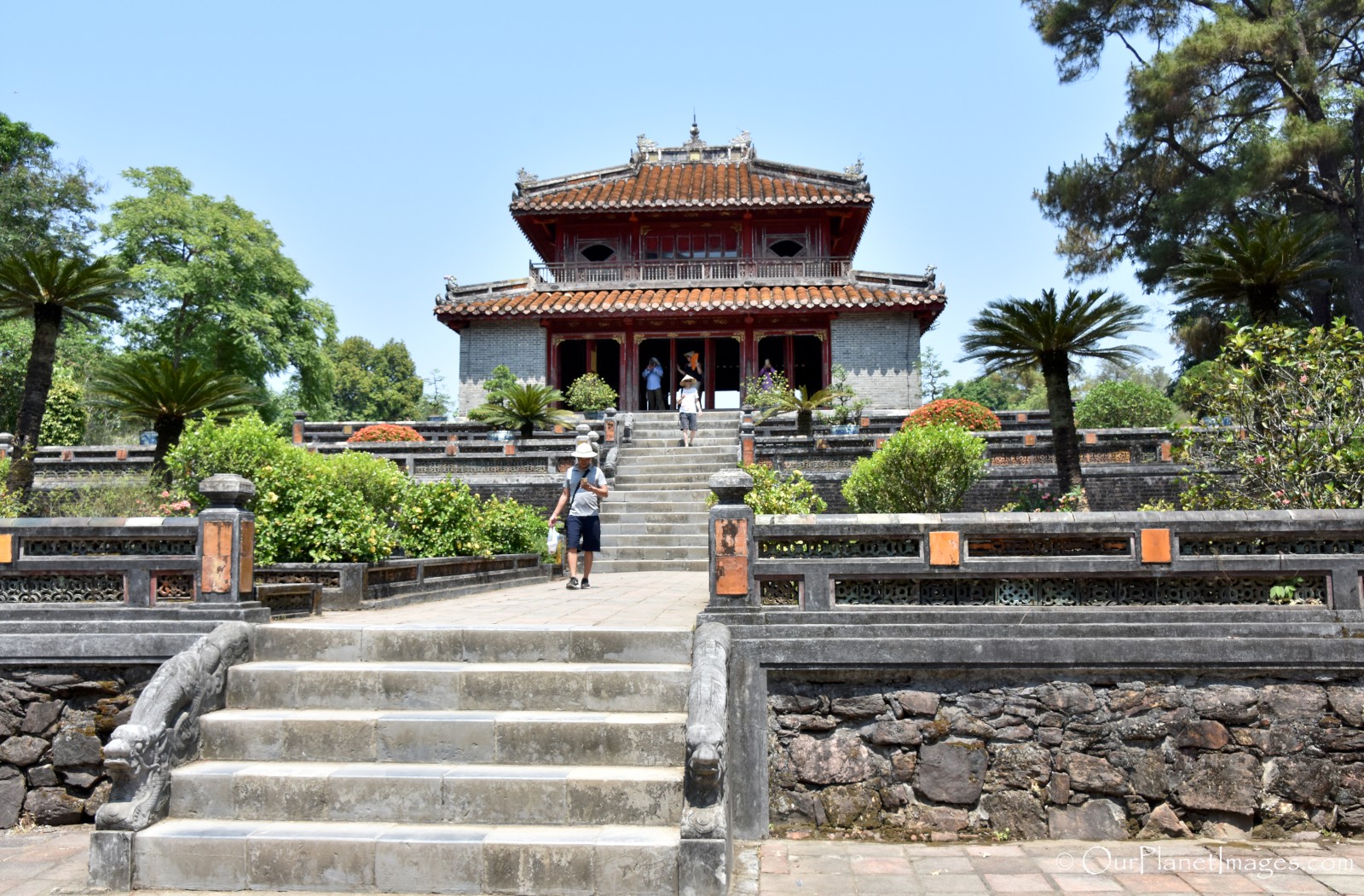
On each side of the pavilion is an obelisks.
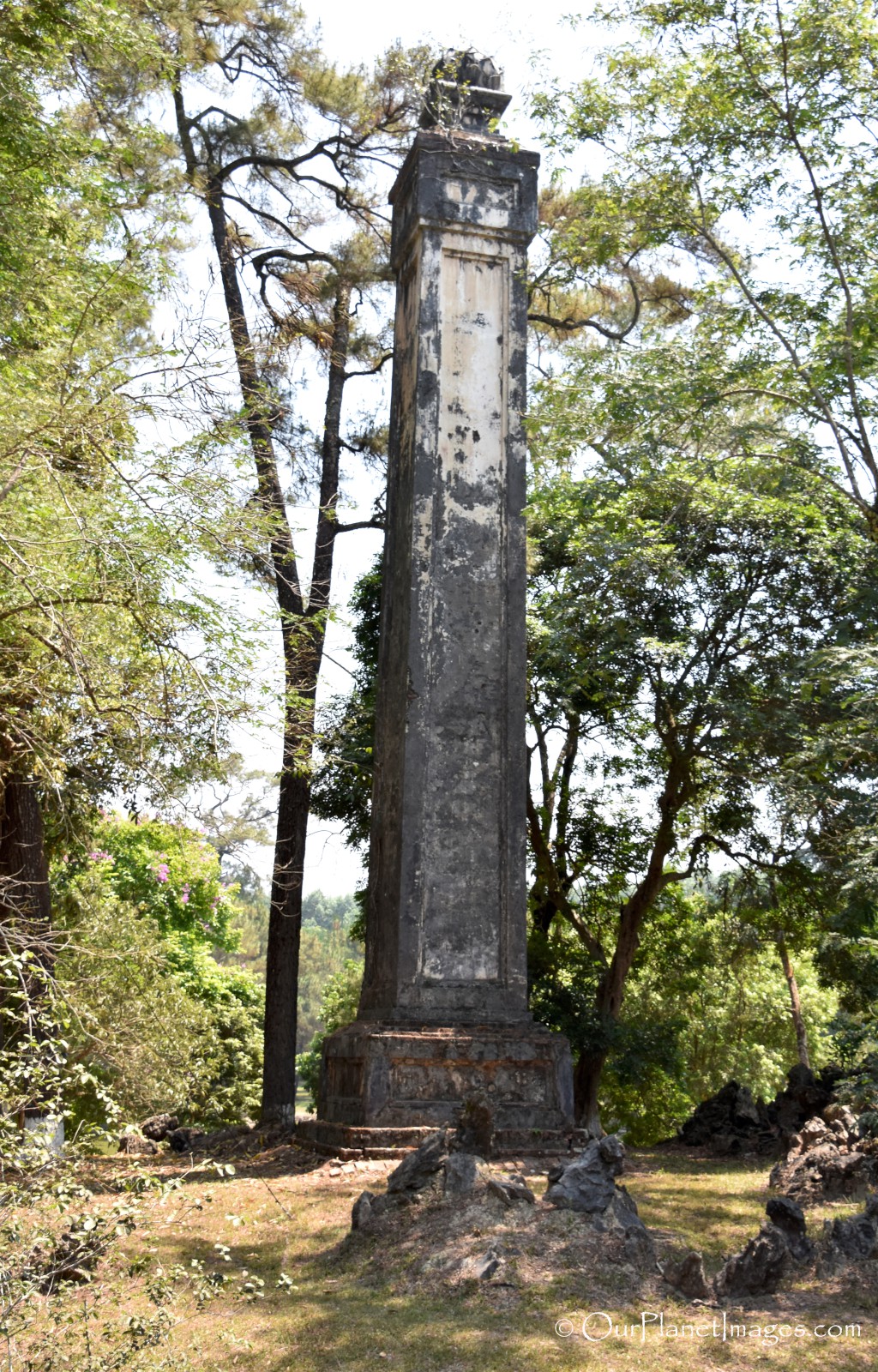
Bridge crossing Tan Nguyet Lake
A bridge to the gravesite crosses the crescent shaped lake named Tan Nguyet. The bridge is bounded on both sides by a triple gate with fired enameled bronze panels above each of the three gates. On top of the center of the gate is a wine flask and on top of each pole of the gate is a lotus bud which represents the emperor’s loyalty to Buddhism.
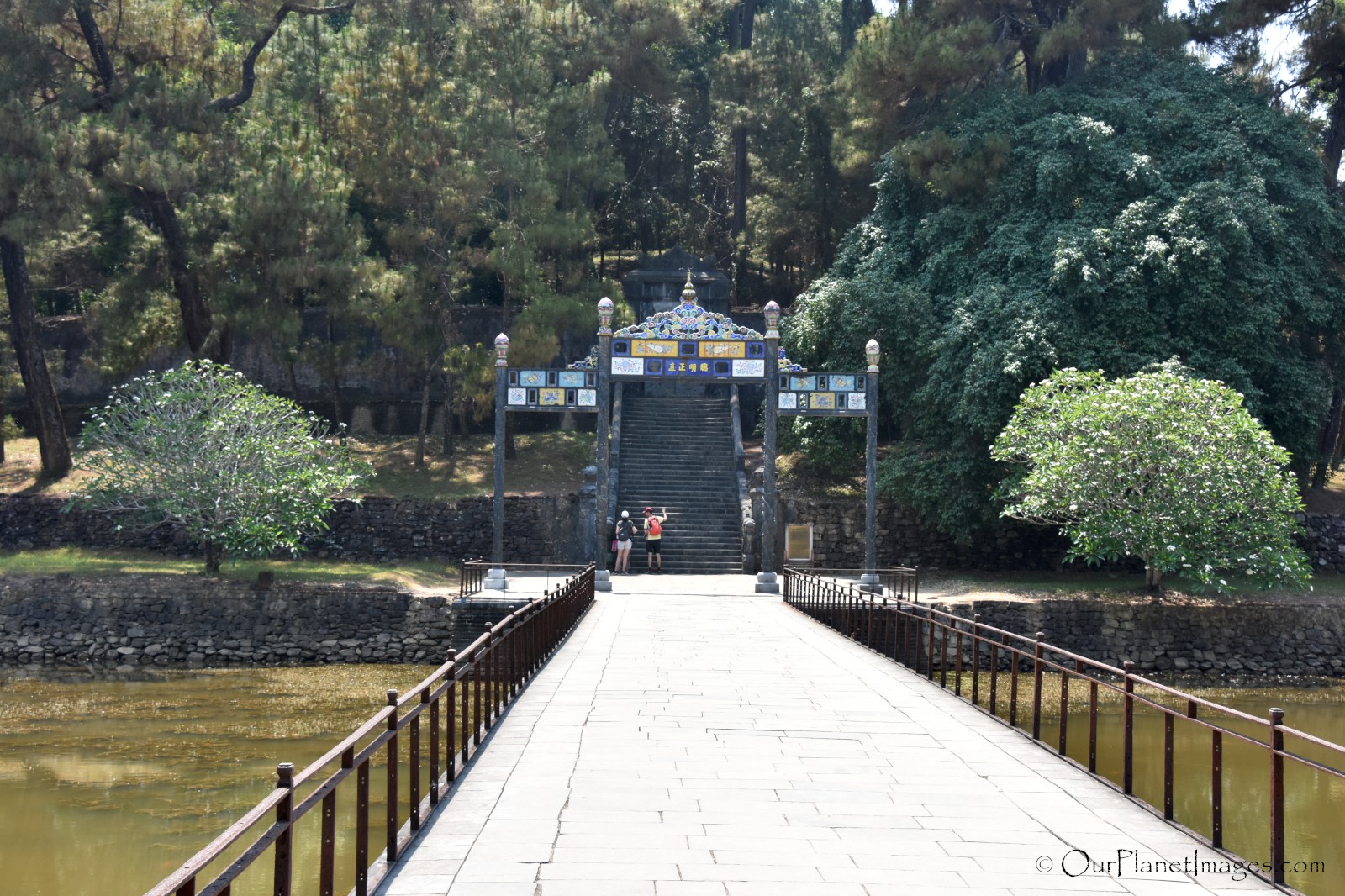
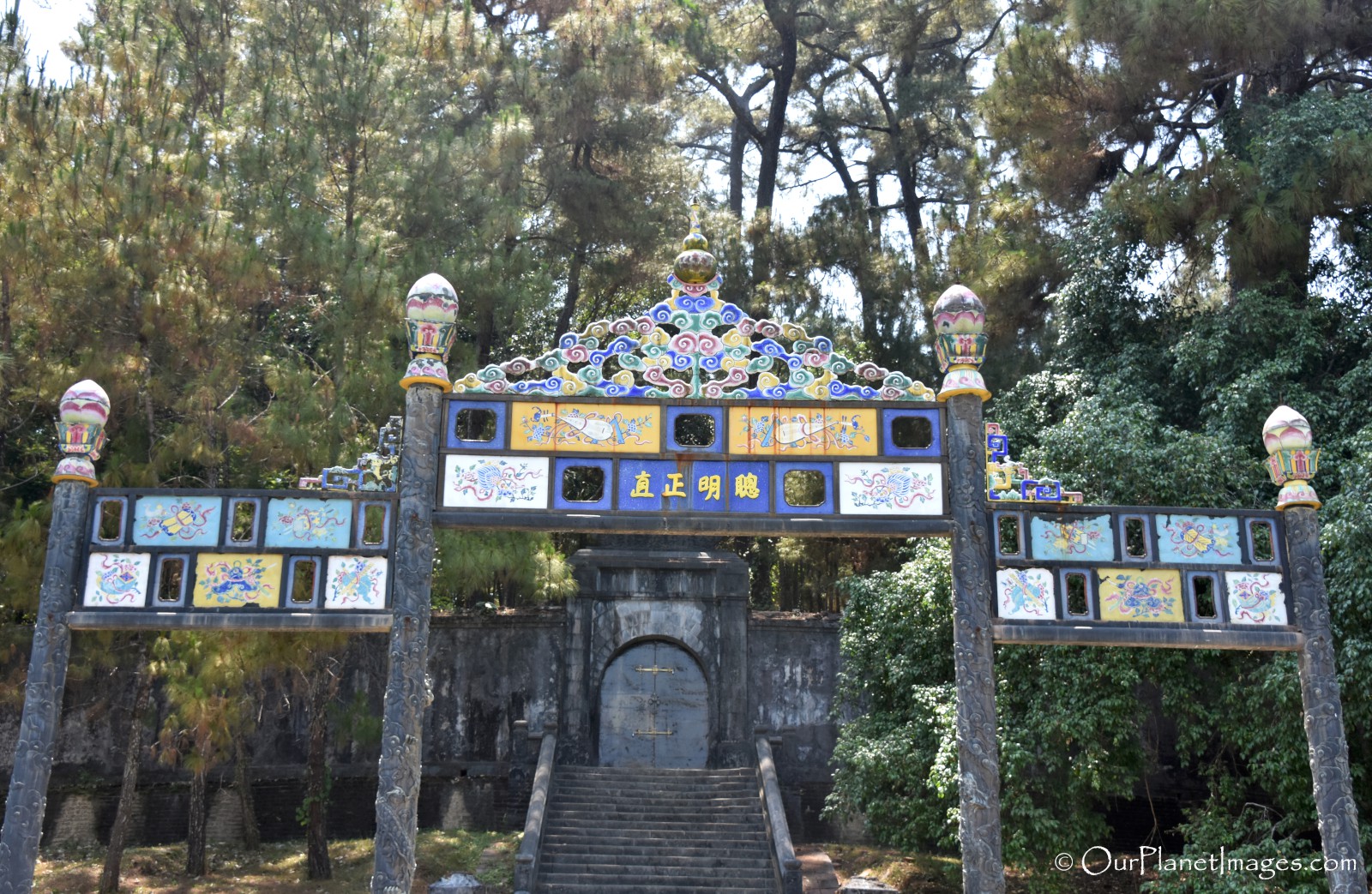
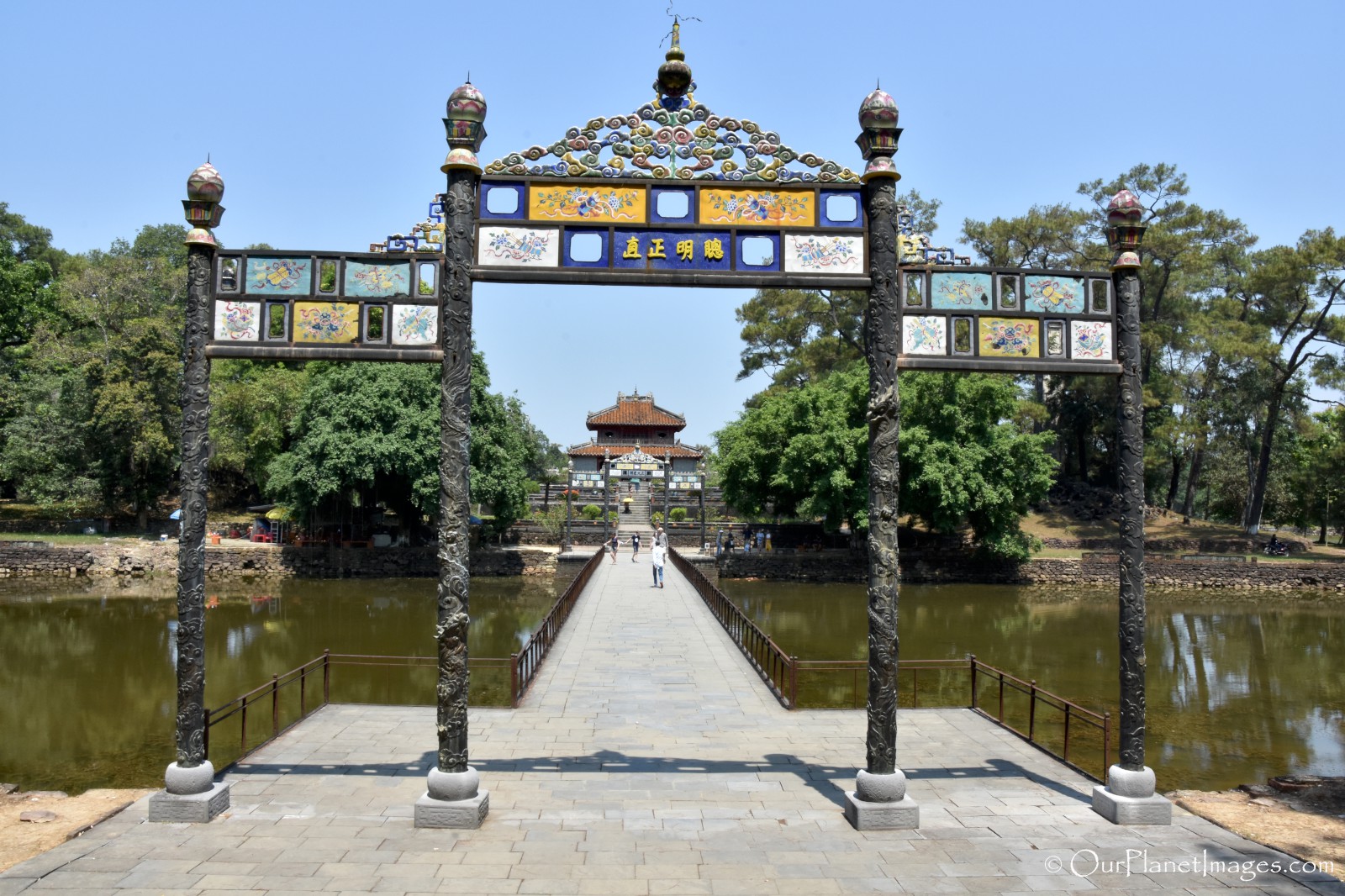
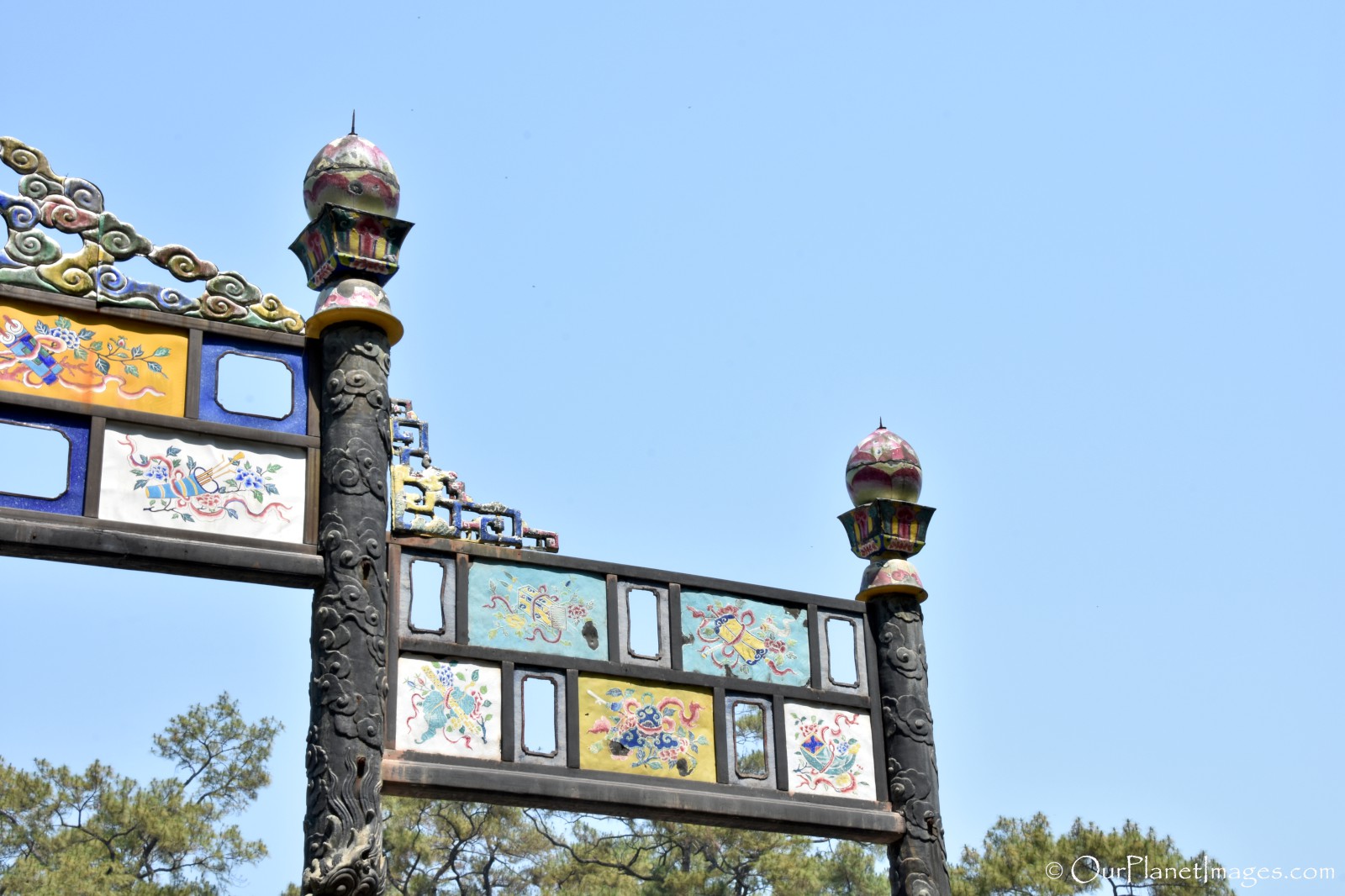
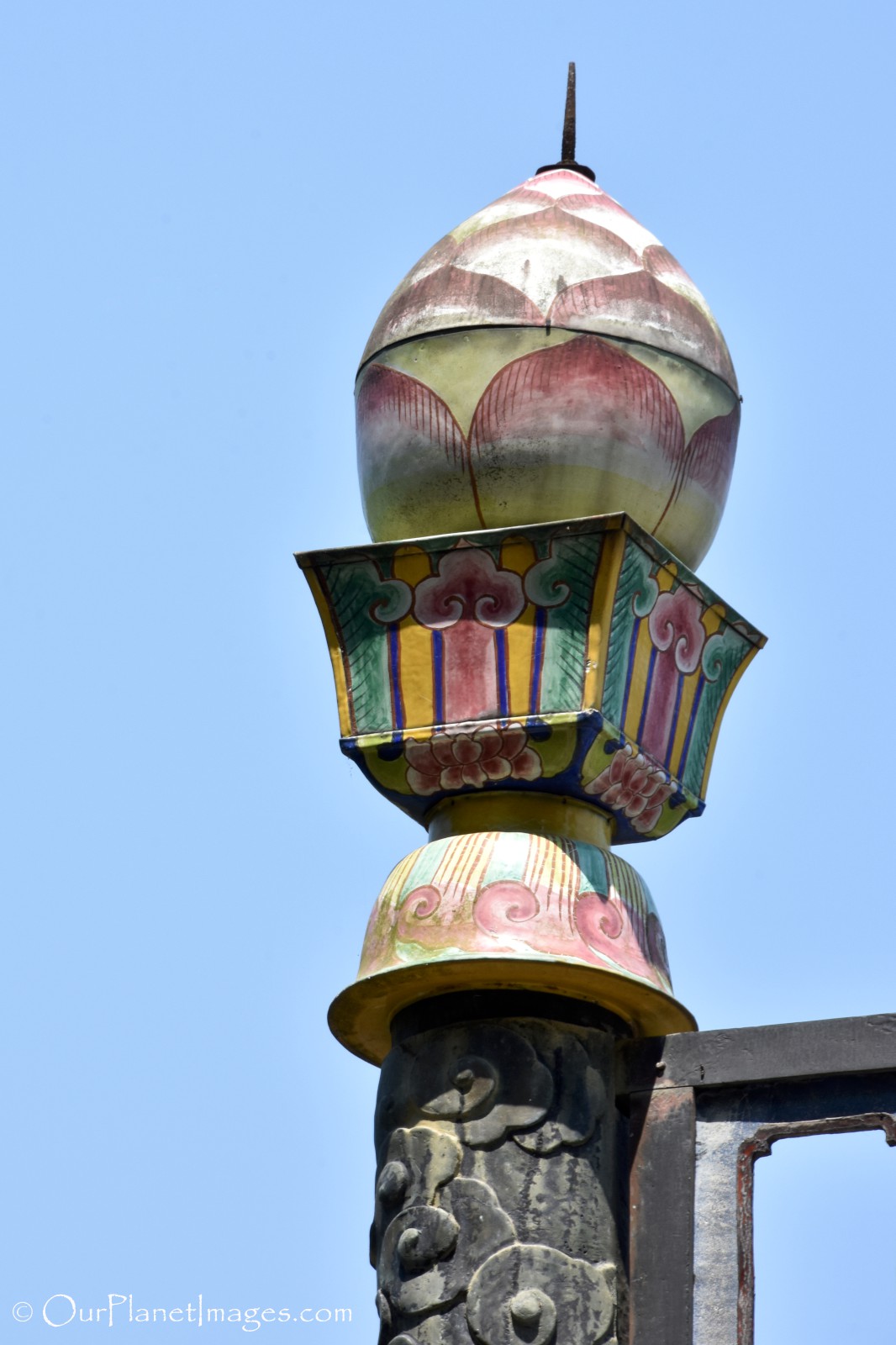
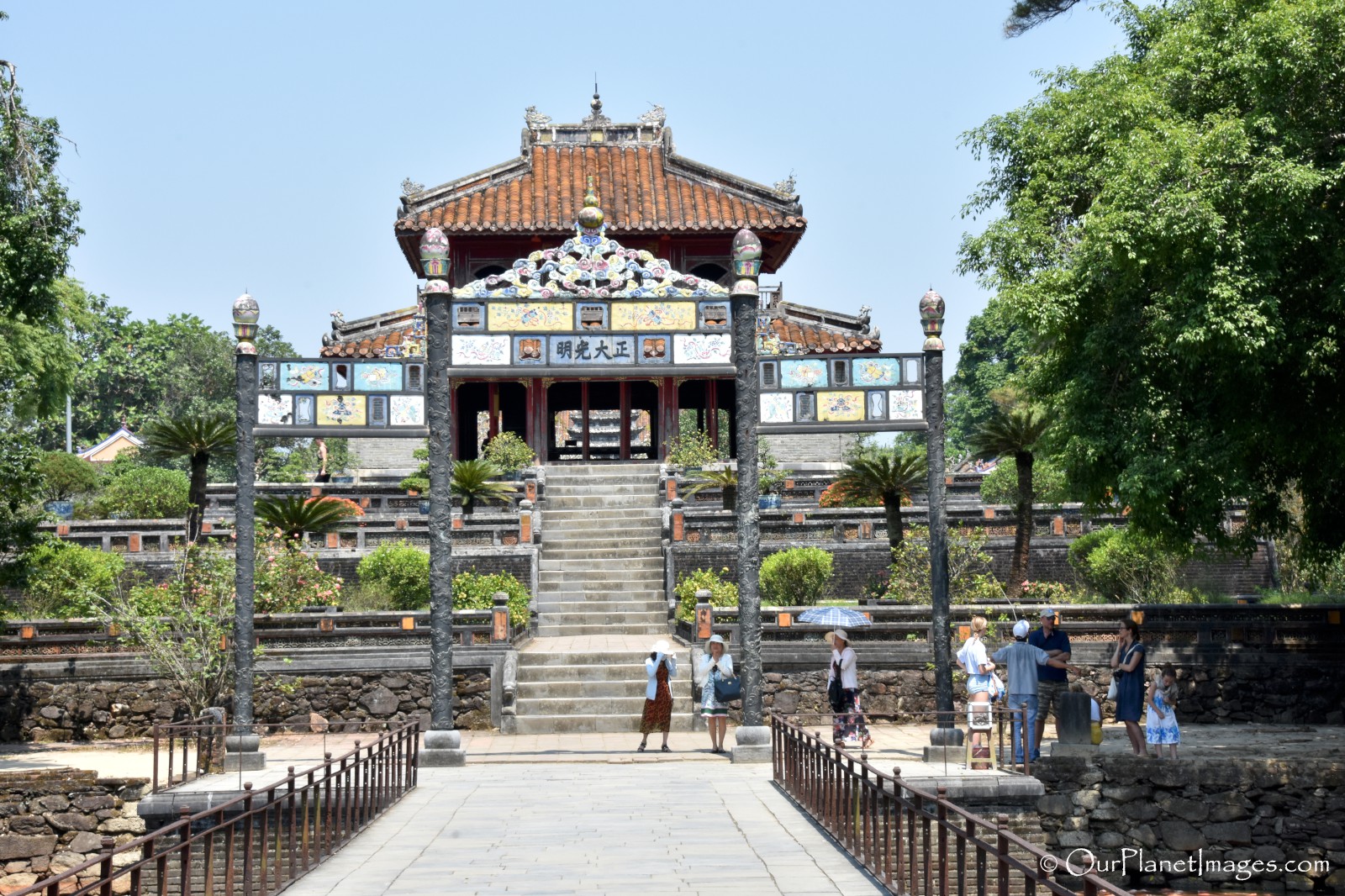
Burial Mound
After crossing the bridge and passing through the second gate, a tall set of stairs leads to a circular wall surrounding the burial mound. A locked bronze door prevents entry into the burial mound however the doors can be opened for maintenance but Minh Mang’s grave is permanently sealed.
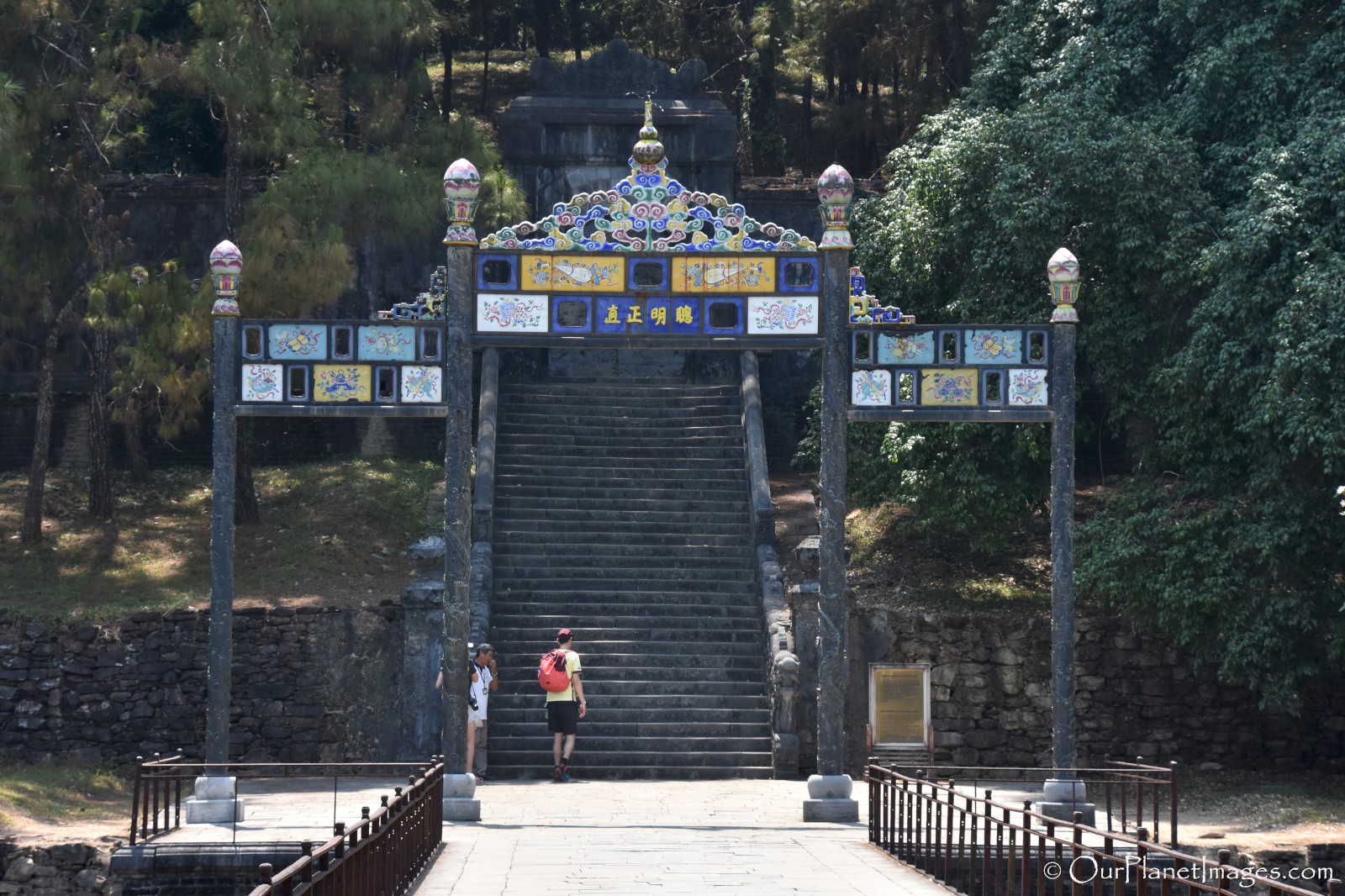
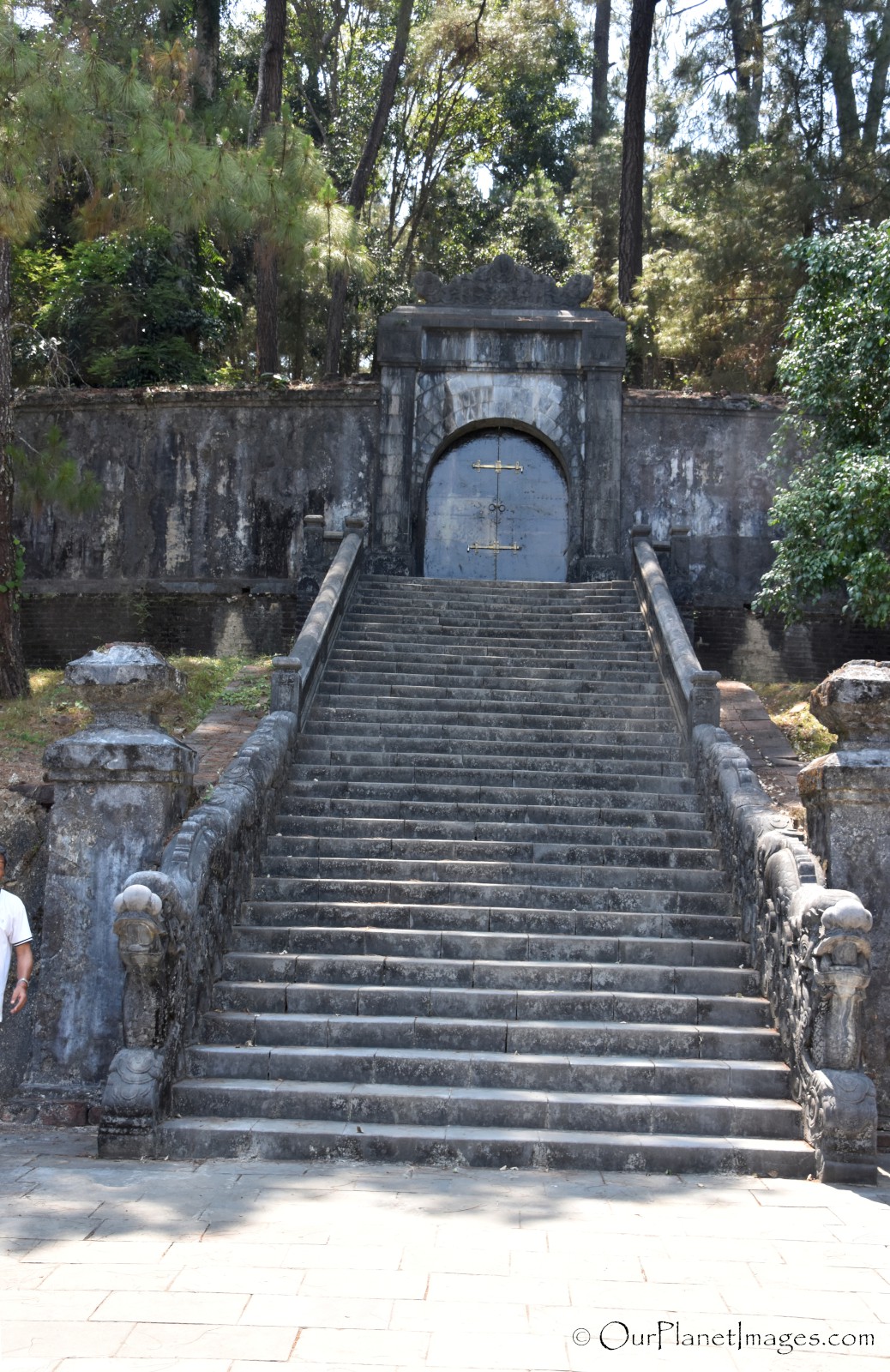
The Dust on My Shoes
I have visited four of the royal tombs in Hue, Vietnam. Each of the four tombs have some similarities but they have qualities that make them unique. At the Minh Mang Tomb, I liked that each section was separated by a gate and there are walls that isolates each section. I also liked that the two lakes provides separation between parts of the complex.
The lakes make for a relaxing and peaceful atmosphere which made me feel like I was in a park and not a mausoleum. The area inside the complex walls that surrounds the main buildings is heavily wooded which has the atmosphere of being in a retreat.
I think it is good that the burial mound is completely isolated from visitors. It provides a sense of respect and it creates a feeling of mystery about the emperor. Sometimes it is okay if we aren’t able to see everything at the places we visit.
